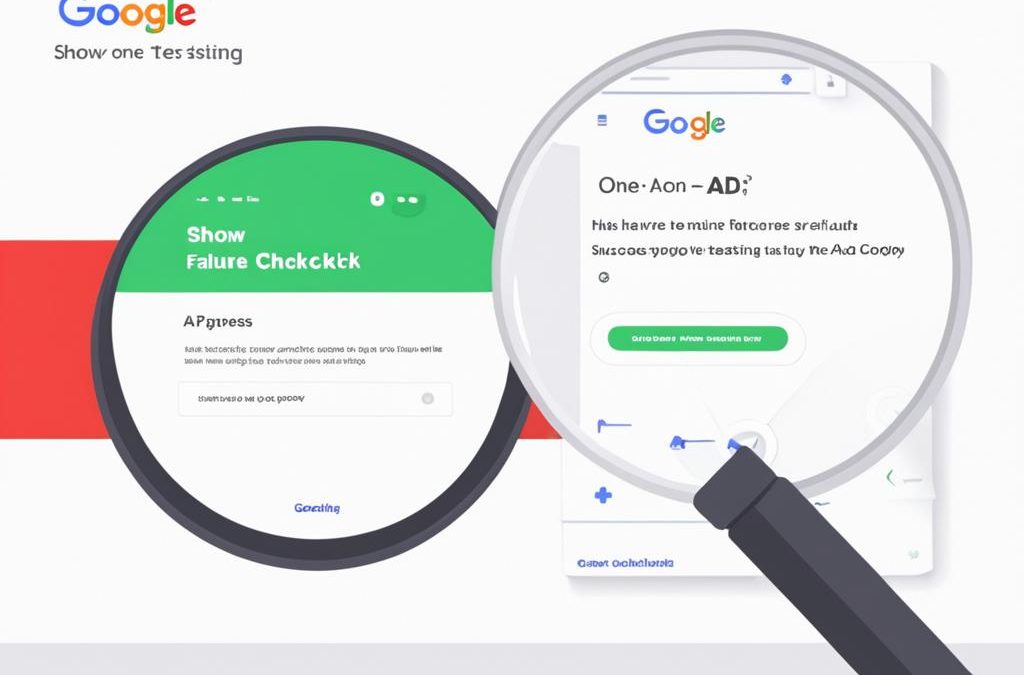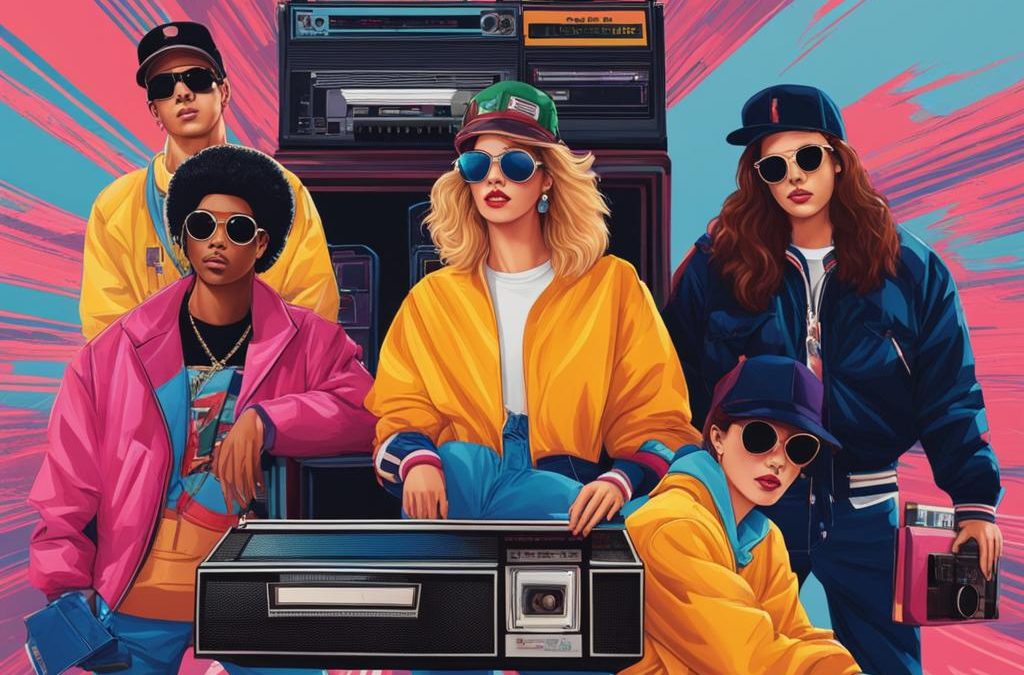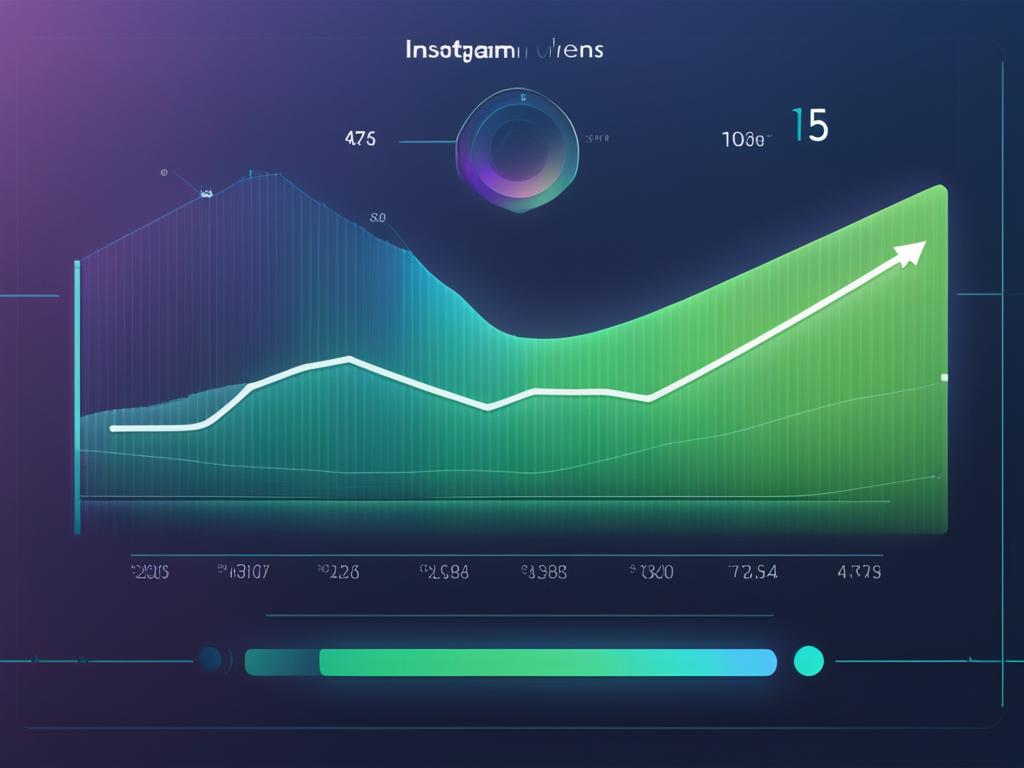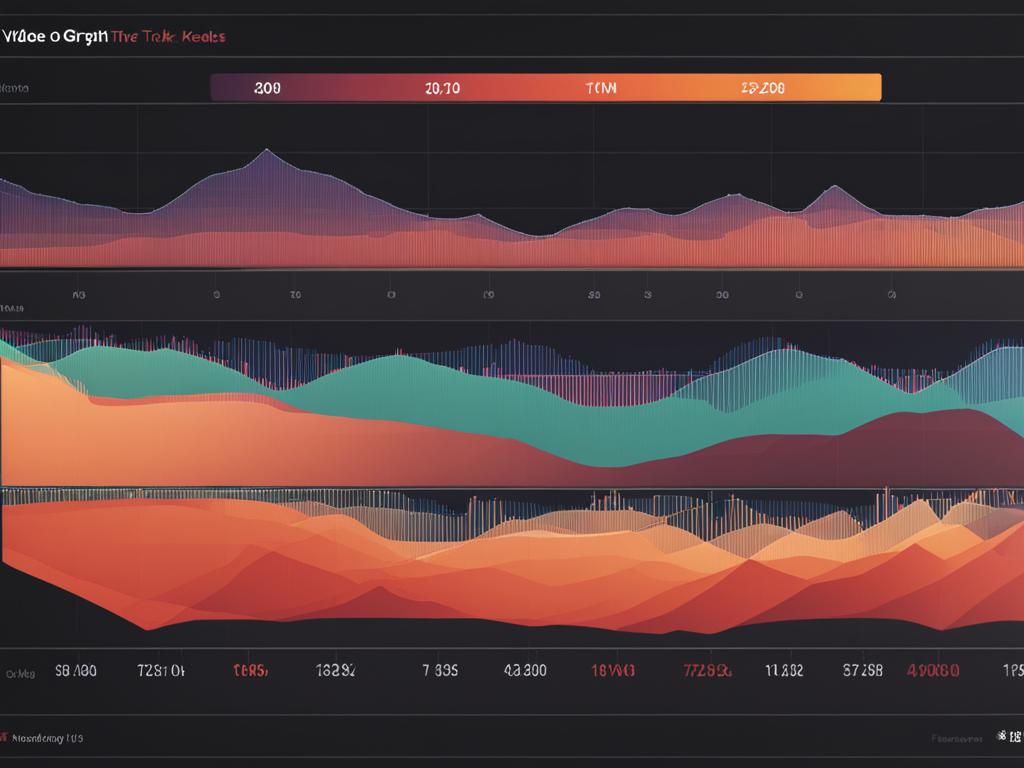Welcome
A website serves as a medium of representation for yourself to the online world. Good design can lead to an effective way of promoting your business. It can serve as a representation of your true self whether it is a business or a blog and therefore Black in Design offers to help you make the right choice.
About Us
Black in Design is a blog dedicated to offering web designing services to its clients. Apart from helping you choose what is the right design for your website, we offer to help you understand how creative designing is helpful and how to choose between different design choices that are effectively going to help you out.
Latest Posts

AI-Driven Customer Interactions and Conversational Marketing
Conversational marketing is a rapidly growing trend in the digital era. As customers increasingly seek personalized and instant responses, businesses are utilizing AI-driven strategies to enhance customer interactions. In this article, we will explore the world of conversational marketing and the powerful role that AI plays in revolutionizing customer engagement.
Conversational marketing involves using various techniques and platforms to engage in meaningful conversations with customers. By adopting a customer-centric approach, businesses can build relationships and facilitate sales through dialogue-driven activities. Messaging apps, chatbots, and social media serve as channels to connect with customers and provide personalized experiences.
Key Takeaways:
- Conversational marketing focuses on engaging customers in meaningful conversations to build relationships and facilitate sales.
- AI plays a significant role in conversational marketing, enabling personalized shopping advice, customer support, and proactive problem-solving.
- AI-driven conversational marketing offers increased engagement, personalized experiences, scalability, and valuable data collection.
- Implementing effective conversational marketing requires careful consideration of privacy and maintaining a brand’s authentic voice.
- By leveraging the power of AI-driven conversational marketing, businesses can enhance customer engagement, personalization, and efficiency.
What is Conversational Marketing?
Conversational marketing is a customer-centric approach that aims to foster connections with customers through dialogue-driven activities. It utilizes various channels such as messaging apps, chatbots, and social media to build relationships and facilitate sales. This method focuses on engaging customers in meaningful conversations and providing personalized experiences.

Conversational marketing embraces the idea of creating a two-way dialogue with customers rather than simply broadcasting marketing messages. By engaging in conversation, businesses can gain valuable insights about their customers’ needs, preferences, and pain points, which can then be used to tailor their marketing strategies and offerings.
Messaging apps and chatbots play a significant role in conversational marketing by providing instant and interactive communication channels. These tools enable businesses to engage with customers in real-time, answer their questions, provide product recommendations, and offer personalized assistance throughout the customer journey.
Why is Conversational Marketing Important?
“Conversational marketing allows brands to build genuine relationships with their customers, which leads to increased trust and loyalty.”
– Michaela Johnson, Marketing Expert
Conversational marketing is important because it helps businesses build authentic relationships with their customers. By engaging in meaningful conversations, businesses can establish trust, showcase their expertise, and address customer concerns directly.
Moreover, conversational marketing enables businesses to gather valuable data and insights about their customers. Through the use of AI-powered chatbots, businesses can collect information on customer preferences, browsing behavior, and purchase history. This data can be used to deliver personalized experiences, recommendations, and offers, ultimately increasing customer satisfaction and driving sales.
In addition, conversational marketing allows businesses to provide instant support and assistance to their customers. With messaging apps and chatbots, customers can get their questions answered and receive the help they need in real-time, without the need to wait for a customer service representative.
In summary, conversational marketing is a customer-centric approach that leverages dialogue-driven activities through messaging apps, chatbots, and social media to build relationships and facilitate sales. By engaging in conversations and delivering personalized experiences, businesses can enhance customer satisfaction, build trust, and drive sales.
The Role of AI in Conversational Marketing
AI (Artificial Intelligence) is a game-changer in the realm of conversational marketing. By harnessing the power of AI-powered chatbots, companies are able to deliver personalized shopping advice, efficient customer support, and proactive problem-solving capabilities. These advanced chatbots replicate human-like conversations and possess the ability to handle a high volume of simultaneous interactions. The integration of AI technology elevates customer engagement, creating tailored and immersive experiences that ultimately result in increased customer satisfaction.
The AI Advantage in Conversational Marketing
“AI allows businesses to provide customers with a seamless and interactive experience. By analyzing data in real-time, AI-powered chatbots can generate personalized recommendations and responses, enhancing the overall shopping and customer service experience.”
The AI-powered chatbots used in conversational marketing have become invaluable assets for businesses across various industries. These chatbots possess the capability to understand customers’ needs, preferences, and intentions, enabling them to offer personalized shopping advice. Through intelligent algorithms, chatbots leverage customer data and patterns to provide tailored product recommendations and assist in decision-making processes.
In addition to personalized shopping assistance, AI-powered chatbots also excel in delivering exceptional customer support. They are equipped with vast knowledge databases and can provide instant and accurate answers to customer queries, ensuring quick resolutions and minimizing wait times. Moreover, these chatbots possess proactive problem-solving capabilities, anticipating potential issues and offering timely solutions, further enhancing customer satisfaction and loyalty.
Human-Like Conversations and Enhanced Engagements
One of the remarkable capabilities of AI-driven chatbots is their ability to engage in human-like conversations. Leveraging natural language processing (NLP) and machine learning techniques, these chatbots can understand and interpret user inquiries and responses, mimicking human conversational patterns and delivering more interactive and engaging interactions.
By simulating human conversations, AI-powered chatbots create a sense of familiarity and build rapport with customers, resulting in a more meaningful and personalized experience. These chatbots can adapt their tone and style of communication to align with each customer’s preferences, making the interaction feel more authentic and tailored to their needs.
The enhanced engagement facilitated by AI-driven chatbots not only increases customer satisfaction but also promotes brand loyalty. Customers are more likely to return to a brand that provides a personalized and interactive experience, fostering long-term relationships and driving business growth.
| Benefits of AI in Conversational Marketing | Description |
|---|---|
| Personalized Shopping Advice | AI-powered chatbots offer tailored product recommendations based on customer preferences and behavior, aiding in the decision-making process and enhancing the overall shopping experience. |
| Efficient Customer Support | AI-driven chatbots provide instant and accurate answers to customer queries, ensuring timely resolutions and minimizing wait times, resulting in improved customer satisfaction. |
| Proactive Problem-Solving | AI-powered chatbots anticipate potential issues and offer proactive solutions, resolving problems before they escalate and providing a seamless customer experience. |
| Human-Like Conversations | AI-driven chatbots simulate human-like conversations, delivering more engaging and interactive interactions that foster rapport and build customer relationships. |
| Enhanced Engagement | By providing personalized experiences and interactive conversations, AI-powered chatbots increase customer engagement, leading to improved brand loyalty and repeat business. |
Benefits of AI-Driven Conversational Marketing
AI-driven conversational marketing offers several benefits that can revolutionize customer engagement and enhance businesses’ marketing strategies. By leveraging AI technology, companies can unlock the following advantages:
- Increased Engagement: AI enables real-time interactions with customers, fostering a higher level of engagement. Through personalized conversations and instant responses, AI-driven conversational marketing ensures that customers feel heard and valued.
- Personalized Experiences: Machine learning algorithms analyze vast amounts of data, allowing AI to provide tailored recommendations and personalized experiences. By understanding customer preferences and behaviors, AI-driven conversational marketing delivers relevant and highly targeted messaging.
- Scalability: With AI, companies can handle a large volume of simultaneous conversations without compromising quality. Automated chatbots powered by AI technology are capable of managing multiple interactions simultaneously, ensuring scalability and efficient customer support.
- Data Collection: AI-driven tools collect valuable insights from customer interactions, enabling businesses to make data-driven decisions. This data helps inform marketing strategies, product development, and overall business growth.
AI-driven conversational marketing not only increases customer engagement but also provides personalized experiences, scalability, and valuable data collection. By incorporating AI technology into their marketing initiatives, businesses can enhance customer satisfaction and drive growth.

| Benefits | Description |
|---|---|
| Increased Engagement | Facilitates real-time interactions, leading to higher customer engagement. |
| Personalized Experiences | Utilizes machine learning algorithms to provide tailored recommendations and personalized messaging. |
| Scalability | Handles a large volume of simultaneous conversations without compromising quality. |
| Data Collection | Collects valuable insights from customer interactions, informing marketing strategies and product development. |
Conclusion
AI-driven conversational marketing has emerged as a powerful tool for enhancing customer engagement, driving personalization, improving efficiency, and ultimately increasing customer satisfaction. By leveraging AI technology, businesses can create personalized experiences and build meaningful connections with their customers.
The potential of AI-driven conversational marketing is immense. As AI technology continues to advance, it offers new possibilities for customization and growth. By implementing conversational marketing strategies and embracing the power of AI, companies can enhance their marketing efforts and deliver exceptional customer experiences.
However, it is crucial for businesses to carefully consider the benefits and challenges associated with implementing conversational marketing. Personalization and efficiency can be achieved, but companies must also address concerns about privacy, maintaining authentic brand voices, and effectively managing AI-driven interactions.
As the conversational marketing landscape evolves, organizations that embrace AI and leverage its capabilities will gain a competitive edge. By prioritizing customer engagement, personalization, and efficiency, businesses can build stronger relationships with their audience and drive success in the ever-changing digital landscape.
FAQ
What is conversational marketing?
Conversational marketing is a customer-centric approach that aims to build connections with customers through dialogue-driven activities. It utilizes various channels like messaging apps, chatbots, and social media to engage in meaningful conversations and provide personalized experiences.
How does AI play a role in conversational marketing?
AI, or Artificial Intelligence, revolutionizes conversational marketing by powering chatbots that provide personalized shopping advice, customer support, and proactive problem-solving. These chatbots simulate human-like conversations and handle large volumes of interactions simultaneously, enhancing engagement and creating personalized experiences.
What are the benefits of AI-driven conversational marketing?
AI-driven conversational marketing offers real-time interactions, increased engagement, personalized experiences through machine learning algorithms, scalability in handling multiple conversations, and valuable data collection for marketing strategies and product development.
How does conversational marketing enhance customer engagement?
Conversational marketing enhances customer engagement through personalization, efficiency, and the potential for increased customer satisfaction. It fosters connections and meaningful conversations with customers, leveraging AI technology to create unique experiences and drive business growth.

AI Content Detection: Bard Vs ChatGPT Vs Claude
In today’s digital landscape, artificial intelligence (AI) plays a crucial role in generating content across various platforms. However, ensuring the accuracy and authenticity of AI-generated content is a major concern. How well can AI models self-detect their own generated content? Let’s delve into a recent study that examined the effectiveness of AI models in the realm of content detection.
Key Takeaways:
- AI models such as Bard, ChatGPT, and Claude were tested for their ability to self-detect their own generated content.
- Bard and ChatGPT showed higher success rates in self-detection compared to Claude.
- The training data and fine-tuning process significantly influenced the AI models’ self-detection capabilities.
- Artifacts in AI-generated content, unique to each model, can be identified and used for self-detection.
- Further research is needed to compare these AI models with other content detection tools.
Artifacts in AI Generated Content
AI detectors are trained to identify artifacts in AI-generated content. These artifacts are unique to each AI model and are a result of the underlying transformer technology.
When it comes to AI content detection, understanding the presence of artifacts is crucial. These artifacts can be defined as distinct patterns or characteristics that are specific to each AI model. By analyzing and recognizing these unique artifacts, AI detectors can determine the origin of the generated content.
Artifacts in AI-generated content can manifest in various forms, such as linguistic patterns, sentence structures, or semantic inconsistencies. They can also be observed in the choice of vocabulary, the flow of ideas, or the overall style of writing.
The researchers conducting the study found that the uniqueness of training data and fine-tuning plays a significant role in the ability of AI models to self-detect their own content. AI models like Bard and ChatGPT, which undergo extensive training using diverse datasets and advanced algorithms, are more successful in identifying their own content compared to other AI models.
By leveraging advanced content detection algorithms, AI models can analyze their own generated content and identify the specific artifacts that distinguish it from content generated by other models. This self-detection capability enables AI models to develop a deeper understanding of their own strengths and limitations.
The following table summarizes the key artifacts identified in AI-generated content:
| AI Model | Unique Artifacts |
|---|---|
| Bard | Linguistic patterns, sophisticated vocabulary, coherent narrative structure |
| ChatGPT | Conversational tone, contextually relevant responses, diverse linguistic style |
| Claude | Multilingual expertise, reduced biases, emphasis on clarity and accuracy |
Methodology and Testing
To evaluate the effectiveness of AI models in self-detecting their own generated content, the researchers conducted a comprehensive and rigorous testing process. The study involved three prominent AI models: ChatGPT, Bard, and Claude. A dataset consisting of fifty different topics was used for testing.
Using the same prompts, all three AI models were tasked with generating essays for each topic. The generated content included both original essays and paraphrased versions. To facilitate self-detection, zero-shot prompting was utilized.
The researchers employed a baseline AI detection tool called ZeroGPT to compare the accuracy rates of self-detection among the AI models. This tool served as a benchmark for evaluating the performance of ChatGPT, Bard, and Claude in detecting their own content.
Evaluation Method
- AI Models Tested:
- ChatGPT
- Bard
- Claude
- Testing Process:
- Dataset: 50 different topics
- Prompts: Identical prompts given to each AI model
- Content Types: Original essays and paraphrased versions
- Zero-shot prompting used for self-detection
- Comparison with ZeroGPT as baseline AI detection tool
Through this methodology, the researchers aimed to assess the AI models’ capabilities in self-detecting their own generated content. The results of the testing process provide valuable insights into the performance of ChatGPT, Bard, and Claude in the context of AI content detection.

Research Findings
Stay tuned for Section 4 of the article to discover the intriguing results of the self-detection tests, analyzing the accuracy rates of each AI model and the differentiated performance among them.
Results: Self-Detection
The self-detection tests yielded interesting results regarding the ability of AI models to detect their own generated content. Bard and ChatGPT demonstrated success in self-detection, while Claude faced challenges in identifying its own content. Additionally, the AI detection tool ZeroGPT displayed better performance in detecting Bard and ChatGPT content compared to Claude. These findings highlight the presence of detectable artifacts generated by Bard and ChatGPT, distinguishing them from Claude.
“The ability of AI models to self-detect their own content has implications for ensuring transparency and accountability in AI-generated materials.” – Researcher
To shed light on the results, a comparative analysis table is presented below:
| AI Model | Self-Detection Success |
|---|---|
| Bard | High |
| ChatGPT | High |
| Claude | Low |
| ZeroGPT (AI detection tool) | Effective for Bard and ChatGPT content |
From the table, it is evident that Bard and ChatGPT outperform Claude in self-detection. While Bard and ChatGPT consistently identified their own generated content, Claude struggled with recognition. Furthermore, the AI detection tool ZeroGPT showcased better performance in detecting content produced by Bard and ChatGPT. These findings emphasize the detectable nature of the artifacts produced by Bard and ChatGPT, enabling their differentiation from content generated by Claude.
The findings from these self-detection tests have substantial implications for AI content detection and the development of AI models. By understanding the varying capabilities of different AI models in self-detection, researchers and developers can enhance transparency and accountability in AI-generated content.
Results: Self-Detecting Paraphrased Content
In addition to testing the self-detection of original essays, the researchers also examined how well AI models could detect their own paraphrased content. In this test, both Bard and ChatGPT demonstrated similar success rates in identifying their paraphrased content. However, it is noteworthy that ChatGPT had a slightly lower success rate compared to the original essay test. On the other hand, Claude displayed an interesting capability by successfully self-detecting the paraphrased content, despite having difficulty detecting the original essays.
This finding suggests that the unique inner workings of each transformer model may contribute to their self-detection capabilities. While Bard and ChatGPT may possess inherent similarities that enable them to identify paraphrased content, the specifics of their respective models may result in differences in efficiency. Claude’s performance in this aspect indicates that it may employ alternate mechanisms to identify rephrased content, despite struggling with original essays.

Placing the image of AI content detection here adds visual relevance to the topic. It represents the cutting-edge technology involved in self-detecting paraphrased content, underscoring the significance of this research.
Results: AI Models Detecting Each Other’s Content
In the test of how well each AI model detected content generated by the other models, Bard was the easiest to detect for the other AI models. ChatGPT and Claude struggled to detect each other’s generated content. This highlights the potential of self-detection as a promising area of study. The results of this specific test do not claim to be conclusive about AI detection in general, but they suggest that AI models perform better at self-detection compared to other AI content detection tools.
AI content detection is a crucial area of research, and these findings shed light on the capabilities and limitations of different AI models. While Bard demonstrated higher detectability among AI models, ChatGPT and Claude faced challenges in detecting each other’s content. Understanding these nuances is essential for improving AI content detection mechanisms and developing more robust solutions for combating AI-generated misinformation and deepfakes.
Researchers discovered that AI models display variations in their ability to self-detect their own generated content, with Bard showcasing the highest detectability among the tested models.
Self-detection by AI models has significant implications for ensuring the integrity and authenticity of machine-generated content. By enhancing AI models’ self-detection capabilities, we can strengthen content moderation, plagiarism detection, and improve overall transparency in the era of AI-powered content creation.
| AI Models | Self-Detection |
|---|---|
| Bard | Easiest to detect among AI models |
| ChatGPT | Struggled to detect content from other models |
| Claude | Struggled to detect content from other models |
As AI technology progresses, further research and development are needed to enhance AI content detection algorithms. By continuously refining the self-detection capabilities of AI models, we can greatly strengthen overall content quality control, combat the spread of misinformation, and foster trust in AI-generated content.
Conclusion
AI content detection is a complex task, and the results of the study confirm that AI models have varying success rates in self-detecting their own generated content. Bard, ChatGPT, and Claude each have strengths and weaknesses in self-detection and detecting each other’s content. Further research is needed to compare these AI models to other state-of-the-art content detection tools. As the field of AI continues to evolve, responsible development practices and transparency around limitations are crucial to building trust in AI systems.
AI image detection and AI video detection are also important areas of study, where AI models are being trained to analyze images and videos for a variety of applications. AI algorithms are designed to recognize objects, scenes, and patterns within visual content, enabling automated content analysis and understanding.
Key Takeaways:
- AI content detection is a complex task, with varying success rates among AI models.
- Responsible development practices and transparency are crucial for building trust in AI systems.
- Further research is needed to compare AI models to other content detection tools.
- AI image detection and AI video detection play important roles in automated content analysis.
Recommendations:
Based on the findings of the study, it is recommended that AI developers and researchers focus on improving the self-detection capabilities of AI models. Enhancing the accuracy and reliability of AI content detection is essential for addressing issues such as misinformation, deepfakes, and biased content. Additionally, ongoing research and development in AI image detection and AI video detection should continue to expand the capabilities of AI systems in analyzing visual content.
To ensure the responsible use of AI, it is important to establish ethical guidelines and regulations for content detection AI. This includes ensuring transparency in AI systems, providing explanations for AI-generated content, and allowing users to verify the authenticity of AI-generated content. By implementing these measures, we can harness the power of AI while mitigating its potential risks.
To conclude, AI content detection, AI image detection, and AI video detection are transformative technologies that have the potential to revolutionize various industries. As AI continues to advance, it is crucial to prioritize the responsible development and use of AI systems to build a safer and more trustworthy digital ecosystem.
Key Differences Among AI Chatbots
When it comes to AI chatbots, namely ChatGPT, Claude, and Bard, each one has its own unique strengths, weaknesses, and areas of expertise. ChatGPT excels in engaging in human-like conversations and producing creative written content. It’s the go-to choice for natural language processing and generating conversational responses.
Claude, on the other hand, focuses on reducing biases and possesses strong multilingual capabilities. This AI chatbot is designed to provide inclusive and diverse interactions, making it ideal for businesses with a global customer base.
Bard, a powerful AI chatbot, stands out for its ability to integrate with real-time data sources through web integration. This feature enables it to access and provide up-to-date information, making it particularly useful for applications requiring real-time data analysis.
It is crucial for businesses to thoroughly understand the capabilities and limitations of each AI chatbot before integrating them into their operations. This understanding will allow businesses to leverage the specific strengths of each chatbot, whether it’s for human-like conversations, bias reduction, multilingual support, or real-time data analysis. By making informed decisions, businesses can maximize the potential of AI chatbots and enhance their overall customer experience.
FAQ
What is AI content detection?
AI content detection refers to the use of artificial intelligence algorithms and models to identify and analyze content, such as text, images, and videos, for various purposes, including identifying artifacts, detecting biases, monitoring for inappropriate or harmful content, and improving content quality.
How effective are AI models in self-detecting their own generated content?
The effectiveness of AI models in self-detecting their own generated content varies. In the study, researchers found that AI models like ChatGPT and Bard had higher success rates in self-detection compared to Claude. The uniqueness of the training data and fine-tuning contribute to the AI models’ ability to self-detect their own content.
What are artifacts in AI-generated content?
Artifacts are unique characteristics or patterns present in AI-generated content that are specific to each AI model. These artifacts are a result of the underlying transformer technology used in the AI models’ training and generation processes. AI detectors are trained to identify and analyze these artifacts to determine the origin of the content.
How were the AI models tested for self-detection?
The researchers conducted tests using a dataset of fifty different topics. Each AI model, including ChatGPT, Bard, and Claude, was given the same prompts to generate essays for each topic, both original and paraphrased. Zero-shot prompting was used to self-detect the AI-generated content. The accuracy rates of self-detection were then analyzed and compared.
Which AI models performed better at self-detection?
In the study, Bard and ChatGPT performed better at self-detecting their own generated content compared to Claude. The results showed that Bard and ChatGPT were more successful in detecting their own content, while Claude had difficulty detecting its own content. ZeroGPT, an AI detection tool, performed better at detecting Bard and ChatGPT content compared to Claude.
Did the AI models perform better at self-detecting original content or paraphrased content?
The AI models, Bard and ChatGPT, had similar success rates in detecting their own paraphrased content compared to the original essays. However, ChatGPT had a lower success rate in self-detecting its paraphrased content compared to the original essays. Interestingly, Claude was able to self-detect the paraphrased content, even though it had difficulty detecting the original essays.
How well did the AI models detect each other’s generated content?
In the test of detecting content generated by other AI models, Bard was the easiest to detect for the other AI models. ChatGPT and Claude struggled to detect each other’s generated content. This suggests that self-detection among AI models is a promising area of study and that AI models perform better at self-detection compared to other AI content detection tools.
What are the key takeaways from the study on AI content detection?
The study confirmed that AI models, such as Bard, ChatGPT, and Claude, have varying success rates in self-detecting their own generated content. The uniqueness of training data and fine-tuning contribute to the AI models’ ability to self-detect. Further research is needed to compare these AI models to other state-of-the-art content detection tools to better understand their capabilities and limitations.
What are the key differences among AI chatbots like ChatGPT, Claude, and Bard?
Each AI chatbot, including ChatGPT, Claude, and Bard, has its own unique strengths, weaknesses, and usage scenarios. ChatGPT excels in human-like conversations and creative writing. Claude focuses on reducing biases and multilingual abilities. Bard stands out for its access to real-time data through web integration. Understanding the capabilities and limitations of each AI chatbot is important for businesses when integrating AI into their operations.

Google Clarifies Algorithm for Choosing Search Snippets
When it comes to search engine optimization (SEO), understanding how search snippets are generated is crucial. Google, the dominant search engine, has recently clarified its algorithm for selecting search snippets, shedding light on essential aspects of search snippet optimization and on-page SEO.
Search snippets are the brief descriptions that appear in the search engine results pages (SERPs), giving users a glimpse into the content of a webpage. They play a crucial role in attracting users’ attention and driving traffic to websites. With Google’s recent update, it’s essential to grasp the changes in how search snippets are chosen and how to optimize them for better search engine rankings.
Previously, search snippets were primarily derived from the meta description, a concise summary of the webpage’s content. However, Google’s updated guidance now emphasizes that the main source of the snippet is the content of the webpage itself. Structured data and meta descriptions still have a role, but they play a secondary part in determining the search snippet. This shift puts the spotlight on the significance of crafting high-quality and relevant webpage content.
For webmasters and SEO professionals, this update has implications for optimizing search snippets and improving search engine rankings. It’s crucial to focus on creating informative and engaging webpage content that accurately represents the page’s information. Meta descriptions should be concise and compelling, providing users with a clear summary of what they can expect when visiting the webpage.
By understanding Google’s updated snippet guidance and implementing best practices for on-page SEO, website owners and SEO professionals can better control the snippets displayed in search results. Prioritizing content quality and accurate meta descriptions can enhance search engine visibility, boost organic traffic, and improve overall website performance.
Key Takeaways:
- The content of the webpage is now the main source of the search snippet chosen by Google.
- Structured data and meta descriptions play a secondary role in determining the search snippet.
- Focus on creating high-quality, informative webpage content that accurately represents the page’s information.
- Create concise and compelling meta descriptions that provide users with a clear summary of the webpage’s content.
- Prioritize content quality and accuracy to improve search engine rankings and organic visibility.
Understanding Google Search Results Snippets
Search snippets are the brief descriptions displayed in the search engine results pages (SERPs) that provide users with an overview of the content on a webpage. They consist of a title, a URL breadcrumb, and a description.
Traditionally, snippets were derived from the meta description. However, according to Google’s updated guidance, the content of the page itself is now the primary source of the snippet. This shift in emphasis highlights the importance of crafting high-quality webpage content.
When users perform a search, they are presented with a list of results on the SERPs. Each result typically includes a title that serves as a clickable link, followed by a URL breadcrumb that indicates the page’s location on the website. Beneath the URL, the search snippet provides a brief description of the page’s content.
“Search snippets are crucial for capturing users’ attention and enticing them to click on a search result. They act as a preview of what the webpage offers, giving users a glimpse into the relevance and quality of the content. Optimizing search snippets can greatly improve click-through rates and organic visibility.”
Google’s updated guidance emphasizes that the content of the page plays a pivotal role in shaping the search snippet. While meta descriptions and structured data still have significance, they are no longer the primary contributors. Instead, Google’s algorithm looks directly at the webpage’s content to generate the snippet.
This change implies that focusing on creating high-quality webpage content is essential for optimizing search snippets and improving organic visibility. Websites must ensure that the content accurately represents the webpage and entices users to click on the search result.
To illustrate the key components of a search snippet, refer to the example below:
| Component | Description |
|---|---|
| Title | The clickable link that represents the webpage in the search results. |
| URL Breadcrumb | The path that indicates the location of the webpage on the website. |
| Description | A concise summary of the webpage’s content. |
It’s crucial for website owners and SEO professionals to understand the evolving nature of search snippets and align their optimization strategies accordingly. By prioritizing high-quality content and accurately describing it through the page’s meta description, web pages can improve their visibility in the SERPs and attract more organic traffic.

Google’s Updated Snippet Guidance
In light of Google’s updated snippet guidance, it is crucial for website owners and SEO professionals to be aware of the changes in order to optimize their content effectively. The guidance clarifies that while structured data and meta descriptions still have a place in the selection of search snippets, the primary source of the snippet is the content of the page itself. This means that accurately describing the webpage’s content in the meta description is paramount, rather than using it as a means of advertising or keyword optimization.
By focusing on providing a concise and accurate summary of the webpage’s content, website owners can increase their chances of having their desired snippet displayed in search results. It’s important to note that meta descriptions should go beyond keyword stuffing and instead aim to inform and engage users with a relevant summary. This aligns with Google’s efforts to improve the overall search experience by delivering high-quality and informative snippets to users.
Implementing this updated guidance requires a strategic approach to on-page SEO. Website owners and SEO professionals should prioritize creating compelling and descriptive meta descriptions that accurately represent the webpage’s content. This involves understanding the target audience’s search intent and crafting concise summaries that entice users to click through to the webpage.
Furthermore, optimizing the page content itself is critical in order to enhance the chances of Google selecting the desired snippet. This involves ensuring that the content is highly relevant, informative, and well-structured. By focusing on these aspects, website owners can increase the visibility and relevance of their webpages in search engine result pages (SERPs), ultimately driving more organic traffic.
In conclusion, Google’s updated snippet guidance places a greater emphasis on the content of the page as the primary source of the snippet. Adhering to this guidance, website owners and SEO professionals can optimize their content to increase visibility, improve search engine rankings, and enhance the overall user experience. By accurately describing the webpage’s content in meta descriptions and optimizing the on-page content, organizations can position themselves for success in the ever-evolving world of SEO.
Implications for SEO Practices
The updated snippet guidance from Google has significant implications for SEO practices, particularly in relation to meta descriptions. In the past, keyword stuffing in meta descriptions was a common practice to highlight keywords and boost visibility in search engine results pages (SERPs). However, this tactic is no longer effective with the updated guidance.
The focus now should be on optimizing meta descriptions for accuracy and conciseness, ensuring they effectively describe the content of the webpage. Rather than using meta descriptions solely for ranking purposes, the emphasis is on providing users with informative and relevant summaries that pique their interest.
Keyword stuffing not only compromises the quality of the meta description, but it can also harm the overall user experience and negatively impact the webpage’s search engine ranking. Instead, SEO professionals should prioritize content optimization and craft meta descriptions that offer a clear and concise summary of the webpage’s content.
By aligning meta descriptions with the content of the webpage, website owners can enhance the user experience and increase click-through rates. This ultimately contributes to better organic visibility and improved search engine rankings.
Benefits of Optimized Meta Descriptions:
- Enhanced user experience
- Increased click-through rates
- Better organic visibility
- Improved search engine rankings
Optimizing meta descriptions is a fundamental aspect of on-page SEO. By focusing on content optimization rather than keyword stuffing, SEO professionals can create compelling and informative meta descriptions that entice users to click, leading to improved organic search traffic and better overall SEO performance.
| Old Approach | New Approach |
|---|---|
| Keyword stuffing for SERP bolding | Accurate and concise descriptions |
| Focus on ranking purposes | Focus on providing value to users |
| Potential quality compromise | Enhanced content representation |
Adhering to the updated snippet guidance and optimizing meta descriptions through content optimization practices will ultimately lead to better user engagement, increased visibility, and improved search engine rankings.
Takeaways from Google’s Updated Snippet Guidance
When it comes to Google’s updated snippet guidance, there are a few key takeaways that website owners and SEO professionals should keep in mind. First and foremost, the content of the page itself is now the primary source of the snippet. This means that content is king when it comes to optimizing your snippets for search engine visibility.
While the content of the page takes precedence, meta descriptions still play a role in certain cases. It’s important to remember that meta descriptions matter and should accurately summarize the webpage’s content, providing users with a compelling reason to click.
When crafting meta descriptions, make sure they go beyond the limitations of on-page content if necessary. Use them as an opportunity to provide an accurate and concise summary that entices users to explore your website further.
“The primary source of the snippet is the content of the page itself.”
Why Content is King
Google’s updated guidance reinforces the importance of high-quality and informative content. By prioritizing content creation, you are more likely to have search snippets that accurately represent your webpage and entice users to click through to your site.
“Website owners and SEO professionals should prioritize creating high-quality and informative content that accurately represents the webpage.”
Quality content not only helps with search snippet optimization, but it also improves overall SEO performance. When your content provides value to users, it increases the likelihood of earning backlinks and improving your search engine ranking.
Meta Descriptions Matter
While the content of the page takes precedence, meta descriptions still have a role to play in search snippet optimization. They provide an opportunity to craft a concise and compelling summary that can attract users to click on your search result.
“Meta descriptions should provide an accurate and compelling summary, going beyond the limitations of on-page content if necessary.”
When crafting meta descriptions, avoid keyword stuffing and focus on accurately describing your webpage’s content. Think of it as a mini-advertisement for your page, enticing users to choose your search result over others in the SERPs.
SEO Best Practices
To optimize your search snippets and improve your overall SEO performance, it’s essential to follow best practices. Here are a few key tips:
- Create high-quality and informative content that accurately represents your webpage.
- Craft concise and compelling meta descriptions that entice users to click.
- Avoid keyword stuffing and instead focus on providing an accurate summary.
- Stay updated with Google’s latest guidance on search snippet optimization.
By following these SEO best practices, you can ensure that your search snippets effectively showcase your content and attract users to your website.

In conclusion, content is king when it comes to optimizing search snippets. Google’s updated guidance emphasizes the importance of high-quality webpage content while still recognizing the role of meta descriptions. By focusing on content quality and accurately summarizing your webpage, you can improve your search engine visibility and drive organic traffic to your site.
Conclusion
Google’s updated snippet guidance has brought about a significant change in how search snippets are generated. To optimize these snippets and improve your website’s search engine rankings, it is essential to prioritize content quality and accuracy in your meta descriptions. By adhering to Google’s guidelines for snippet optimization and implementing best SEO practices, you can gain better control over the snippets that Google displays in search results, ultimately enhancing your organic visibility.
Staying updated with Google’s latest updates and focusing on a user-oriented approach to on-page SEO is crucial. Remember that the content of your web pages serves as the primary source for search snippets, while meta descriptions and structured data play a secondary role. Craft high-quality content that accurately represents your webpage’s content and use meta descriptions to provide concise and informative summaries.
Ensure that your meta descriptions go beyond the limitations of on-page content, if necessary, to captivate users’ attention and entice them to click on your link in the search results. By following Google’s guidance and applying SEO optimization techniques, you can improve your website’s visibility, attract more organic traffic, and increase your chances of achieving higher search engine rankings. Keep refining your strategy and adapt to Google’s evolving snippet algorithms to stay ahead in the competitive online landscape.
FAQ
What are search snippets?
Search snippets are brief descriptions displayed in search engine result pages (SERPs) that provide users with an overview of the content on a webpage. They consist of a title, URL breadcrumb, and description.
How were search snippets traditionally generated?
Traditionally, search snippets were derived from the meta description of a webpage.
What does Google’s updated guidance clarify about search snippets?
Google’s updated guidance clarifies that the primary source of search snippets is the content of the webpage itself, with structured data and meta descriptions playing a secondary role.
What is the role of structured data and meta descriptions in search snippets?
While structured data and meta descriptions may still be used in some cases, they are no longer the primary contributors to search snippets.
What should meta descriptions focus on?
Meta descriptions should focus on accurately describing the webpage’s content, rather than being used for advertising copy or keyword optimization.
How should meta descriptions be approached for search snippet optimization?
Meta descriptions should provide an accurate and concise summary of the webpage’s content, aiming to inform and interest users instead of focusing solely on ranking purposes.
What are the key takeaways from Google’s updated snippet guidance?
The primary source of search snippets is the content of the webpage itself, and meta descriptions still play a role in certain cases. Both content quality and accurate meta descriptions are crucial for optimizing search snippets and improving search engine rankings.
Why is it important to adhere to Google’s snippet optimization guidelines?
Adhering to Google’s snippet optimization guidelines and SEO best practices is crucial for improving search engine rankings and increasing organic visibility in search results.
What approach should website owners and SEO professionals take for on-page SEO?
Website owners and SEO professionals should prioritize creating high-quality and informative content that accurately represents the webpage. They should also pay attention to the latest updates from Google and maintain a user-oriented approach to on-page SEO.

Google Tests Ad Copy Variation Without Informing Advertisers
Google is continuously working on improving its advertising platform to provide advertisers with more effective tools and strategies. One of the latest developments is the testing of ad copy variation without informing advertisers. This testing allows advertisers to make more informed decisions on which tactics generate a better return on investment.
The ability to test ad copy is crucial for advertisers to optimize their campaigns and improve performance. By testing different variations of ad copy, advertisers can identify what resonates best with their target audience and make data-driven decisions. However, it’s important to note that ad copy testing requires proper tools and implementation of best practices.
To access the ad copy testing feature on Google Ads, advertisers can create custom experiments from their original campaigns. These experiments can compare the performance of the experiment against the original campaign and allocate a percentage of the budget to the experiment. Custom experiments are available for Search, Display, Video, and Hotel Ads campaigns.
In order to improve ad copy performance, advertisers can utilize A/B testing methods. This involves creating two versions of an ad and measuring their effectiveness in achieving campaign goals. By analyzing the results, advertisers can identify the ad copy that generates better engagement and conversion rates.
Measuring the effectiveness of ad copy is essential for overall ad copy optimization. Advertisers should monitor key metrics such as click-through rates, conversion rates, and revenue generated to gauge the success of their ad campaigns. This data-driven approach allows advertisers to refine their ad copy strategies and optimize their campaigns accordingly.
Key Takeaways:
- Google is testing ad copy variation without informing advertisers to improve decision-making.
- Ad copy testing tools and best practices are crucial for optimizing ad performance.
- A/B testing allows advertisers to compare the effectiveness of different ad copy versions.
- Measuring ad copy effectiveness through key metrics helps in ad copy optimization.
- Continuous testing and optimization lead to better ad campaign performance on Google.
How to Set up a Custom Experiment
To set up a custom experiment on Google Ads, follow these steps:
- Go to the Campaigns section and click on Experiments.
- Click the plus button to create a new custom experiment.
- Select the original campaign you want to test.
- Provide a name and description for the experiment.
- Choose the percentage of the budget to allocate to the experiment.
- Schedule up to 5 experiments for a campaign, but only run one experiment at a time.
- Wait for the experiment’s ads to be reviewed and start running.
- Monitor the performance of the experiment and make changes as needed.
If you encounter any issues while creating an experiment, consider the following troubleshooting steps:
- Check if your original campaign has been removed.
- Remove any shared budgets.
- Choose dates that don’t overlap with other experiments.
- Ensure your campaign doesn’t have unsupported features.
- Resolve any policy issues with keywords.
By following these instructions and troubleshooting tips, you’ll be able to set up a custom experiment on Google Ads and start optimizing your ad copy effectively.

| Benefits of Setting up a Custom Experiment | Instructions |
|---|---|
| 1. Provides insights into the performance of your original campaign. | 1. Go to the Campaigns section and click on Experiments. |
| 2. Allows you to compare the performance of different ad variations. | 2. Click the plus button to create a new custom experiment. |
| 3. Helps in optimizing your ad copy for better results. | 3. Select the original campaign you want to test. |
| 4. Enables you to allocate a percentage of the budget specifically for the experiment. | 4. Provide a name and description for the experiment. |
| 5. Provides data for making informed decisions on improving campaign performance. | 5. Choose the percentage of the budget to allocate to the experiment. |
Different Types of Ad Copy Experiments
Google Ads offers various types of ad copy experiments that allow you to test and optimize your campaigns in different ways.
1. Ad Variations
Ad variations are a useful tool for testing modified ads against the original ads in your campaign. By creating variations of your ads, you can compare their performance and determine which version is more effective. If the modified ads show improved results, you can apply them to your campaign to maximize performance.
2. Custom Experiments
Custom experiments allow you to test various campaign settings to identify the most effective strategies for your goals. These experiments enable you to experiment with different elements such as Smart Bidding strategies, keyword match types, landing pages, audiences, and ad groups. By analyzing the performance of each experiment, you can make data-driven decisions to optimize your campaigns.
3. Video Experiments
If you run video ads on YouTube, video experiments can help you determine which ad versions perform better. By testing different videos, you can gain insights into their effectiveness in engaging your audience and driving results. This can help you refine your video ad strategy and allocate your budget effectively.
4. Performance Max Experiments
Performance Max experiments allow you to A/B test different features, settings, and campaigns across various channels, including Search, Display, and Video. By running these experiments, you can gain valuable insights into what works best for your specific marketing objectives. This can lead to improved overall performance and better ROI.
Understanding the results of your ad copy experiments is crucial for making informed decisions. Key experiment metrics such as click-through rates, conversion rates, and cost per conversion can provide valuable insights into the effectiveness of your ad variations or experiment settings. Analyzing these metrics allows you to identify successful strategies and apply them to your ongoing campaigns, leading to continuous improvement and better overall performance.
“Experimentation is key to optimizing your ad copy and achieving better results. By leveraging different types of experiments, you can uncover insights that help you create more effective campaigns.”
Now that you’re familiar with the different types of ad copy experiments available, it’s time to explore how to interpret the results of these experiments. This will help you make well-informed decisions for your ongoing campaigns and drive better performance.
How to Interpret Experiment Results
When conducting experiments in Google Ads, interpreting the results is crucial in understanding the performance of your ad copy and determining the effectiveness of your campaign. The experiments table provides valuable information to guide your decision-making process.
The experiments table in Google Ads displays the name, type, status, and results of each experiment. It allows you to compare the performance of the control campaign with the treatment campaign. The results column indicates which campaign performed better, providing insights into the impact of the tested changes.
The status column in the experiments table notifies you about the current state of each experiment. It indicates whether the experiment is in progress, complete and applied, or scheduled. This information helps you track the progress and status of your experiments.
To evaluate the effectiveness of your ad copy, additional metrics can be added to the experiments table. These metrics provide a comprehensive analysis of your experiment and enable you to measure the impact of different variables on your campaign’s performance.
Interpreting experiment results involves evaluating experiment metrics and determining the success of your experiments. By analyzing the data provided in the experiments table, you can gain valuable insights into the performance of your ad copy and make informed decisions regarding the changes to be applied to your original campaign.
Evaluating Experiment Metrics
When evaluating experiment metrics, consider the following factors:
- Click-through rate (CTR): A higher CTR indicates that the ad copy is engaging and effective in attracting user attention.
- Conversion rate: A higher conversion rate suggests that the ad copy is persuasive and compelling, leading users to take the desired action.
- Cost per conversion: A lower cost per conversion signifies better efficiency in ad spend, indicating that the ad copy is generating results at a lower cost.
- Return on ad spend (ROAS): A higher ROAS demonstrates the effectiveness of the ad copy in generating revenue and maximizing the return on investment.
By analyzing these metrics and considering the experiment results, you can determine the success of your experiments and make data-driven decisions to optimize your ad copy performance.

| Experiment Name | Type | Status | Results |
|---|---|---|---|
| Experiment 1 | Custom Experiment | Complete and Applied | Treatment campaign performed better |
| Experiment 2 | Ad Variations | In Progress | Control campaign performed better |
In the example above, Experiment 1 was a custom experiment that has been completed and applied. The treatment campaign outperformed the control campaign, indicating that the changes made in the experiment had a positive impact. Experiment 2, which involved ad variations, is still in progress, with the control campaign currently performing better.
Interpreting experiment results allows you to make data-driven decisions and optimize your ad copy performance. By analyzing metrics and understanding experiment status, you can refine your campaigns and drive better results.
Optimizing Ad Copy for Local Search Ads
Google is currently conducting experiments with Local Search Ads, which aim to promote verified business locations in local search results without relying on keywords. While advertisers cannot request to participate in these experiments at the moment, this development presents an opportunity to target local searchers more effectively and optimize ad copy specifically for local searches.
To optimize ad copy for local search ads, advertisers should focus on implementing locally-focused strategies and optimizations. Some recommended approaches include:
- Activating or deactivating location extensions based on the geographical areas you want to target.
- Utilizing the information provided in your Google My Business (GMB) account to trigger relevant results for local searches.
The introduction of new features in Google My Business, such as business descriptions and services listings, offers additional signals for triggering ads in local searches. Leveraging these features can significantly enhance the performance of your local ad campaigns.
To illustrate the potential impact of optimizing ad copy for local search ads, consider the following example:
A local bakery wants to attract more customers from nearby neighborhoods. By activating location extensions and optimizing their Google My Business account to include detailed information about their bakery, such as opening hours, popular products, and customer reviews, they can increase the visibility of their ads in local search results. This can drive more targeted traffic to their website or physical store, ultimately resulting in higher conversions and revenue.
| Local Search Ad Optimization Strategies | Benefits |
|---|---|
| Activate location extensions | Increase visibility in local search results |
| Optimize Google My Business account | Trigger relevant results for local searches |
| Utilize new GMB features | Enhance ad performance in local searches |
The Importance of GMB Optimization for Local Searches
Optimizing Google My Business (GMB) is crucial for achieving high rankings in local searches. By harnessing the power of GMB, businesses can provide essential information to Google, enabling the search engine to deliver relevant local results to searchers. The introduction of business descriptions and services listings in GMB has further enhanced the optimization opportunities, allowing businesses to showcase their offerings and attract local customers.
GMB optimization plays a significant role in improving local ad performance. With the inclusion of structured pricing information for services, businesses can provide transparency to potential customers, assisting in their decision-making process. Just as optimizing product feeds enhances visibility and relevance in Google Shopping results, careful optimization of GMB can significantly impact local search rankings and overall ad performance.
GMB optimization not only boosts local search rankings but also enhances the overall online presence of a brand. By ensuring that GMB listings reflect accurate and up-to-date information, businesses can build trust and credibility with potential customers.
When optimizing GMB for local searches, consider including relevant keywords in your business description and services listings. This can help Google understand the nature of your business and match it with relevant search queries. Additionally, it is essential to regularly monitor and update your GMB profile, ensuring that all information is accurate and consistent across multiple platforms.
By maximizing GMB optimization for local searches, businesses can increase their visibility, attract more local customers, and ultimately drive conversions. The power of GMB cannot be underestimated in today’s competitive digital landscape, making it an essential tool for businesses looking to thrive in local markets.
Potential Motives Behind Local Experiment Campaigns
The motive behind the local experiment campaigns and the updates to Google My Business can be seen from different perspectives. The lack of keywords in local campaigns offers advertisers the possibility to target local searchers without relying on existing campaigns and active keywords. The updates to Google My Business provide Google with more information to match ads with relevant searches. It is unclear if these local experiment campaigns will continue or if there are alternative motives at play. However, optimizing the new details in GMB is essential for ranking in local searches and taking advantage of any future developments in local advertising.
Conclusion
Ad copy testing on Google is a valuable strategy for advertisers looking to improve their campaign performance. With various types of experiments available, including ad variations, custom experiments, video experiments, and performance max experiments, advertisers can test different settings, optimize their ad copy, and measure effectiveness.
By taking advantage of these testing opportunities, advertisers can make more informed decisions and enhance their campaigns for local searches through Google My Business. Optimizing their Google My Business profiles by leveraging features like business descriptions and services listings can improve their visibility and relevance in local searches.
While the future of local search ads and monetization on Google remains uncertain, focusing on Google My Business optimization is a proactive approach that can lead to better results in local ad performance. By staying informed about updates and new developments, advertisers can stay ahead of the curve and maximize their advertising impact.
FAQ
What is ad copy testing and why is it important?
Ad copy testing is the process of experimenting with different variations of ad copy to measure their effectiveness and optimize campaign performance. It allows advertisers to determine which tactics generate a better return on investment and make data-driven decisions. Ad copy testing can help improve click-through rates, conversion rates, and overall ad performance.
How can I test ad copy on Google?
Google provides various tools and features to test ad copy. One way is through custom experiments on Google Ads, where you can create different versions of your original campaigns and compare their performance. You can also use ad variations to test modified ads against the original ads and apply the modifications if they perform better. Additionally, you can conduct video experiments to determine the effectiveness of different video ads on YouTube or run performance max experiments to A/B test different features, settings, and campaigns.
How do I set up a custom experiment on Google Ads?
To set up a custom experiment, go to the Campaigns section in Google Ads and click on Experiments. Then, click the plus button to create a new custom experiment. Select the original campaign you want to test, provide a name and description for the experiment, and choose the percentage of the budget to allocate to the experiment. You can schedule up to 5 experiments for a campaign but only run one experiment at a time.
What are the different types of ad copy experiments on Google?
Google offers ad variations, custom experiments, video experiments, and performance max experiments. Ad variations allow you to test modified ads against the original ads. Custom experiments are used to test various campaign settings and elements. Video experiments help determine the effectiveness of different video ads on YouTube. Performance max experiments allow you to A/B test various features, settings, and campaigns to improve results.
How can I interpret the results of my ad copy experiments?
The experiments table in Google Ads provides information on the results of your experiments, including the name, type, status, and results. The results column indicates whether the control or treatment campaign performed better. The status column shows whether the experiment is in progress, complete and applied, or scheduled. Additional metrics can be added to the table to analyze ad copy performance. It’s important to interpret the results to make informed decisions on applying changes to the original campaign.
How can I optimize ad copy for local search ads?
To optimize ad copy for local search ads, you can activate or deactivate location extensions, utilize Google My Business information to trigger relevant results, and focus on locally focused optimizations. Google My Business optimization is crucial for ranking well in local searches. The introduction of business descriptions and services listings in Google My Business allows businesses to provide important information to Google, improving relevance for local searches.
Why is Google My Business optimization important for local searches?
Optimizing Google My Business is essential for ranking well in local searches. The new features, such as business descriptions and services listings, provide additional signals for triggering ads in local searches. By optimizing the details in Google My Business, including services and structured pricing information, businesses can improve local ad performance and increase their visibility and relevance in local searches.
What are the potential motives behind local experiment campaigns?
The motives behind local experiment campaigns can be seen from different perspectives. The lack of keywords in local campaigns offers advertisers the possibility to target local searchers without relying on existing campaigns and active keywords. The updates to Google My Business provide Google with more information to match ads with relevant searches. The future of local experiment campaigns and the monetization of local search ads remain uncertain, but optimizing the new details in Google My Business is essential for ranking well in local searches and taking advantage of any future developments in local advertising.
What is the importance of ad copy testing on Google?
Ad copy testing on Google is a valuable strategy for improving campaign performance and optimizing ad copy. It allows advertisers to measure the effectiveness of different ad variations, experiment with various settings and elements, and make data-driven decisions. By conducting ad copy testing, advertisers can improve click-through rates, conversion rates, and overall ad performance, leading to better returns on investment.

Pop Culture Nostalgia Dominates Marketing Campaigns
In the ever-evolving world of marketing, one strategy has proven to be consistently effective: nostalgia marketing. By tapping into the emotional connection and sentimental appeal of the past, brands have been able to create a powerful bond with consumers, leading to increased brand loyalty and consumer engagement.
Marketers faced numerous challenges in 2023, but nostalgia marketing emerged as a dominant strategy. Instead of chasing the latest trends, many brands chose to rely on what they knew worked: nostalgia and pop culture. By leveraging childhood memories and cultural icons, these brands were able to spark joy and create a lasting connection with their target audience.
Notable examples of successful nostalgia marketing campaigns include McDonald’s and Barbie. McDonald’s tapped into the nostalgia of childhood birthday parties with their Grimace Birthday Campaign, generating significant engagement and driving sales growth. Meanwhile, Barbie’s movie success reinforced the brand’s nostalgic appeal and led to a 25% increase in toy sales.
But it’s not just traditional marketing techniques that have embraced nostalgia. Coca-Cola, for example, has embraced generative AI technology to create a sense of nostalgia with their “Create Real Magic” platform. And brands like State Farm and Dunkin’ have successfully leveraged nostalgia and celebrity partnerships to create memorable advertising moments.
In conclusion, nostalgia marketing continues to dominate marketing campaigns, as it creates an emotional connection and sparks joy in consumers. By incorporating storytelling and leveraging the sentimental appeal of the past, brands can establish a strong emotional resonance that leads to lasting brand loyalty and consumer engagement.
Key Takeaways:
- Nostalgia marketing is a highly effective strategy for creating an emotional connection with consumers.
- Brands that tap into pop culture and childhood memories can spark joy and drive engagement.
- Campaigns that leverage nostalgia and storytelling create a lasting impact and strengthen brand loyalty.
- Generative AI technology can be used to enhance nostalgia marketing campaigns and create authentic experiences.
- Nostalgia-inducing celebrity partnerships can generate significant brand exposure and resonate with target audiences.
McDonald’s Taps into Nostalgia with Grimace Birthday Campaign
McDonald’s, the renowned fast-food chain, successfully tapped into nostalgia with their highly engaging Grimace Birthday Campaign. By capitalizing on pop culture references and childhood memories, McDonald’s created a campaign that resonated with consumers, resulting in significant engagement and sales growth.
“The Grimace Birthday Campaign not only showcased McDonald’s ability to evoke nostalgia but also demonstrated the power of leveraging sentimental appeal to create a socially engaging experience,” says marketing expert Sarah Johnson.
The multichannel campaign featured an array of appealing components, ranging from ads and a captivating video game to limited-edition merchandise and an immersive augmented reality experience. This strategic approach allowed McDonald’s to reach a broad audience across different platforms, maximizing campaign visibility.
One of the standout elements of the Grimace Birthday Campaign was the introduction of a limited-edition purple shake. This exclusive beverage quickly became a sensation on TikTok, generating an astonishing 3 billion views. The viral trend not only enhanced brand visibility but also contributed significantly to the overall sales growth of McDonald’s during the campaign period.
The Grimace Birthday Campaign struck a chord with consumers by tapping into their childhood nostalgia, evoking memories of birthday parties at McDonald’s. By incorporating the sentimental appeal associated with these cherished moments, McDonald’s successfully created an emotional connection with their audience.

In summary, McDonald’s Grimace Birthday Campaign exemplifies the power of nostalgia marketing in driving consumer engagement and sales growth. By leveraging the iconic Grimace character, a range of captivating experiences, and the sentimental appeal of birthday parties, McDonald’s successfully captured the hearts and wallets of its target audience, solidifying their position as a leader in the fast-food industry.
| Grimace Birthday Campaign Highlights | Results |
|---|---|
| Multichannel campaign with ads, video game, merchandise, and augmented reality experience | Increased brand visibility |
| Introduction of limited-edition purple shake | Over 3 billion views on TikTok |
| Nostalgic appeal of birthday parties at McDonald’s | Significant consumer engagement and emotional connection |
Barbie’s Movie Success Reinforces Nostalgic Brand Affinity
Mattel and Warner Bros.’ “Barbie” movie took the world by storm, becoming a global sensation. This highly-anticipated film not only captured the hearts of audiences but also generated remarkable financial success, raking in an astonishing $1.36 billion at the box office. The movie’s triumph had a significant ripple effect on the Barbie brand, leading to a remarkable 25% increase in toy sales. This achievement marked a turning point for Barbie, as the brand had previously faced challenges in maintaining social currency with parents.
One of the key factors behind the movie’s success was Barbie’s positive perception as a role model. Throughout the years, Barbie has ingrained herself in popular culture, becoming a cherished childhood icon for countless individuals. Her connection to culture, inclusivity, empowerment, and fun resonated deeply with audiences, creating a strong emotional bond that drove moviegoers to theaters and toy stores alike.
Furthermore, various partnerships and marketing collaborations further amplified Barbie’s market penetration and engagement levels. By joining forces with other brands and cultural influencers, Barbie was able to tap into existing nostalgia and cultural resonance, strengthening her already influential presence in the market. These collaborative efforts seamlessly blended the nostalgia of the past with the aspirations of the present, creating a captivating narrative around the Barbie brand.
By tapping into the power of nostalgia, Barbie’s movie triumph not only reinforced brand affinity but also showcased the enduring cultural impact that this iconic doll continues to have on generations of fans.
To encapsulate Barbie’s movie success and its impact, consider the following table:
| Impact of Barbie’s Movie | Statistics |
|---|---|
| Box Office Revenue | $1.36 billion |
| Toy Sales Increase | 25% |
| Positive Perception of Barbie as a Role Model | Enhanced |
| Partnerships and Collaborations | Strengthened Market Presence |

The success of Barbie’s movie not only revitalized the brand but also serves as a testament to the enduring power of nostalgia and its ability to create a deep emotional connection with consumers. As the Barbie brand continues to evolve and adapt to changing cultural dynamics, it remains a significant force in the toy industry and a cherished cultural icon for generations to come.
Coca-Cola Leads the Way in Nostalgia Marketing with Generative AI
Coca-Cola, a global leader in the beverage industry, has embraced the power of nostalgia marketing with its innovative use of generative AI technology. Partnering with management consultancy Bain & Company and OpenAI, Coca-Cola has created the “Create Real Magic” platform, which utilizes AI to evoke nostalgic emotions and create meaningful connections with consumers.
The brand has successfully integrated generative AI into various aspects of its marketing strategy, including music festivals, a Las Vegas event, and the creation of digital holiday cards. By leveraging AI, Coca-Cola has been able to tap into the sentimentality and emotional resonance that nostalgia holds for many individuals.
The “Create Real Magic” Platform
The “Create Real Magic” platform developed by Coca-Cola allows consumers to experience personalized moments of nostalgia. By capturing and analyzing data on individual preferences and memories, the AI-powered platform creates unique and tailored experiences that evoke a sense of nostalgia and connection.
The “Create Real Magic” platform enables Coca-Cola to connect with consumers on a deeper level, making them feel valued and understood. Through the power of generative AI, Coca-Cola has successfully created a bridge between the past and the present, enhancing brand loyalty and engagement.
Furthermore, Coca-Cola’s exploration of generative AI extends beyond marketing initiatives. The company has also utilized AI in product development, leveraging the technology to create a new beverage that has shown promising initial results. This forward-thinking approach demonstrates Coca-Cola’s dedication to innovation and its commitment to staying at the forefront of technological advancements.
Future Endeavors and Projects
With the success of its generative AI-powered marketing campaigns, Coca-Cola continues to explore additional consumer-facing and non-consumer-facing applications of the technology. The company remains committed to leveraging the power of nostalgia marketing and generative AI to create unique and memorable experiences for its consumers.
Coca-Cola’s pioneering efforts in nostalgia marketing and generative AI have not only allowed the brand to connect with consumers on a deeper level but have also paved the way for future trends in the industry. Through the intersection of technology and nostalgic storytelling, Coca-Cola has set a benchmark for other brands to follow.
| Benefits of Coca-Cola’s Nostalgia Marketing with Generative AI | Examples |
|---|---|
| Enhances emotional connection with consumers | “Create Real Magic” platform |
| Drives consumer engagement and brand loyalty | Music festival activations, Las Vegas event |
| Creates personalized and tailored experiences | Digital holiday cards |
| Fosters innovation in product development | New AI-created beverage |
State Farm and Dunkin’ Leverage Nostalgia and Celebrity Collaborations
State Farm and Dunkin’ are two brands that have effectively tapped into nostalgia and celebrity partnerships to create impactful advertising campaigns. By leveraging the power of nostalgia, these brands have successfully engaged their target audience and generated positive results.
State Farm’s collaboration with NFL star Travis Kelce and pop sensation Taylor Swift resulted in a memorable campaign that capitalized on the hype surrounding their relationship. By recreating heartfelt moments from Donna Kelce’s interactions with Swift, State Farm generated significant brand exposure and increased search interest. The campaign successfully bridged the worlds of football and music, resonating with fans of both Travis Kelce and Taylor Swift.
Dunkin’ took advantage of actor Ben Affleck’s affinity for their brand, cementing a collaboration that incorporated humor and authenticity into their advertising. By partnering with Affleck, Dunkin’ tapped into the nostalgia-inducing moments associated with the brand, evoking memories of enjoying a cup of coffee or a donut from Dunkin’ in the past. This partnership helped Dunkin’ create a relatable and engaging campaign that connected with their target audience on a personal level.
These collaborations demonstrate the power of nostalgia and celebrity partnerships in advertising. By tapping into the emotions and memories associated with beloved celebrities and using nostalgia-inducing elements, State Farm and Dunkin’ were able to create campaigns that resonated with their audience and generated positive brand experiences.
Celebrity Partnerships: A Winning Strategy
Celebrity partnerships have become a popular marketing strategy for brands across various industries. By teaming up with well-known figures, brands can leverage the influence and reach of celebrities to promote their products or services. In the case of State Farm and Dunkin’, these partnerships elevated their advertising campaigns, helping them cut through the clutter and stand out in a competitive landscape.
Not only do celebrity partnerships help brands capture attention, but they also bring a sense of trust and familiarity to the advertising message. Consumers often feel a connection with their favorite celebrities, and when they see these familiar faces endorsing a brand or product, they are more likely to pay attention and connect with the message. This can help build credibility and trust, ultimately driving consumer engagement and brand loyalty.
The Power of Nostalgia in Advertising
Nostalgia is a powerful emotion that evokes positive feelings and memories from the past. By incorporating nostalgic elements into their advertising, brands can create a sense of familiarity and tap into the emotional connections consumers have with the past. This emotional resonance can help brands forge deeper connections with their audience, generating positive brand experiences and driving consumer engagement.
State Farm and Dunkin’ effectively tapped into nostalgia by using elements that resonate with their target audience. State Farm recreated moments from Donna Kelce’s interactions with Taylor Swift, evoking the sentimental appeal of a close-knit family and the joy of shared experiences. Dunkin’ capitalized on the nostalgic moments associated with their brand, reminding consumers of the happiness and comfort they experienced in the past while enjoying Dunkin’ products.
These nostalgic advertising campaigns not only generate positive brand experiences but also create lasting connections with consumers. By leveraging the power of nostalgia and celebrity partnerships, State Farm and Dunkin’ were able to engage their audience, increase brand awareness, and drive consumer loyalty.
Conclusion
Nostalgia marketing has proven to be a powerful and effective strategy for creating emotional resonance and establishing lasting connections with consumers. By tapping into the familiar comforts of the past, marketers can evoke a sense of authenticity, stability, and a shared cultural experience.
The integration of nostalgic elements from past decades into modern advertising campaigns has shown to resonate with audiences on a deep level, bridging the gap between the old and the new. Consumers are drawn to the sentimental appeal of a bygone era, and this emotional connection drives brand loyalty and consumer engagement.
Looking ahead, nostalgia marketing is set to continue its dominance in the future trends of the industry. As technology advances and creative storytelling evolves, marketers will have even more tools at their disposal to create memorable and impactful campaigns that leverage the power of nostalgia. By harnessing the emotional resonance that nostalgia evokes, brands can successfully transcend generational boundaries and forge lasting connections with their target audience.
As consumer preferences and trends continue to evolve, the ability to tap into the emotional power of nostalgia will remain a valuable strategy for marketers. By drawing upon shared cultural experiences and invoking familiar sentiments, marketers can create campaigns that resonate with audiences and leave a lasting impression. In an ever-changing marketing landscape, nostalgia marketing will continue to be a driving force in building strong connections and fostering brand loyalty.
FAQ
What is nostalgia marketing?
Nostalgia marketing is a marketing strategy that leverages nostalgic elements from the past to create emotional connections with consumers. By tapping into familiar experiences and cultural references, brands can evoke positive emotions, strengthen brand loyalty, and engage consumers on a deeper level.
How does nostalgia marketing create an emotional connection?
Nostalgia marketing creates an emotional connection by evoking fond memories and experiences from the past. By tapping into these nostalgic elements, brands can trigger positive emotions such as happiness, comfort, and a sense of belonging. This emotional connection fosters a stronger bond between the consumer and the brand, leading to increased brand loyalty and engagement.
What role does storytelling play in nostalgia marketing?
Storytelling is a crucial component of nostalgia marketing. By telling stories that evoke nostalgia and resonate with consumers, brands can create a deeper connection with their audience. Through compelling narratives, brands can tap into shared experiences and cultural references, capturing the attention and emotions of consumers, and fostering a sense of brand affinity and recognition.
How does nostalgia marketing impact brand loyalty?
Nostalgia marketing can positively impact brand loyalty by establishing an emotional connection with consumers. When brands tap into nostalgic elements that resonate with their target audience, it creates a sense of familiarity and trust. This emotional bond builds brand loyalty as consumers associate positive emotions and memories with the brand, making them more likely to choose and remain loyal to that brand over time.
Can nostalgia marketing bridge generational boundaries?
Yes, nostalgia marketing has the power to bridge generational boundaries. By tapping into nostalgic elements from different eras, brands can evoke emotions and memories that resonate with a wide range of age groups. These shared experiences and cultural references create a sense of unity and connection, allowing brands to engage with consumers across different generations and strengthen their overall consumer base.
How does nostalgia marketing benefit consumer engagement?
Nostalgia marketing benefits consumer engagement by creating a strong emotional appeal to consumers. When brands tap into nostalgic elements, it sparks joy and nostalgia-inducing memories, prompting consumers to engage with the brand on a deeper level. Whether through interactive campaigns, immersive experiences, or nostalgic merchandise, brands can generate excitement and encourage active participation from their audience, resulting in higher consumer engagement.
How can nostalgia marketing improve brand recognition?
Nostalgia marketing can improve brand recognition by leveraging familiar elements from the past that consumers can easily associate with a particular brand. By tapping into nostalgic icons, logos, slogans, or cultural moments, brands can trigger instant recognition and recall. This recognition strengthens brand identity, facilitates brand recall, and increases the likelihood of consumers choosing the brand over competitors.
What is the future of nostalgia marketing?
The future of nostalgia marketing holds promise as marketers continue to find innovative ways to tap into consumer emotions and shared experiences. With advancements in technology, brands can create even more immersive and personalized nostalgic experiences. Additionally, as new generations grow older, nostalgia will continue to evolve, offering brands new opportunities to connect emotionally with consumers and drive brand loyalty and engagement.

Reels Outperform TikTok in Median Video Views
When it comes to video views on social media, Instagram Reels takes the lead over TikTok, according to a recent video performance analysis by Emplifi. The data reveals that Reels not only outperforms TikTok but also surpasses regular video uploads on Facebook.
The analysis shows that longer Reels clips tend to perform the best in terms of views. Short Reels earn a median of 6,145 views, while medium-length Reels earn a median of 7,830 views. This indicates that user engagement and attention are higher for longer-form content on Instagram.
Furthermore, Facebook Reels, the video feature on the popular social media platform, also sees significant success, with more than three times the number of median views compared to other video uploads on the platform. Brands can take advantage of this trend by optimizing their Reels strategy to increase video views and boost their social media presence.
Key Takeaways:
- Instagram Reels drive more views than TikTok, making it an effective choice for brands looking to increase video views.
- Longer Reels clips perform the best, earning a median of 7,830 views.
- Facebook Reels outperform regular video uploads on the platform, attracting three times the number of median views.
- Brands should focus on creating longer, engaging Reels content to optimize video views and boost their social media presence.
- By leveraging the popularity and reach of Reels, brands can effectively increase their video views on Instagram and Facebook.
Please note that the image should be placed in a visually appealing and relevant position within the content, but only in the center.
The Popularity of Reels over TikTok
When it comes to video views, Instagram Reels has been dominating TikTok, despite the latter’s hyped popularity. Emplifi’s analysis of brand profiles on both platforms revealed that Reels consistently outperforms TikTok in terms of view counts. This indicates that Reels is favored by users and the algorithms on Instagram and TikTok, making it a smart choice for brands aiming to increase their video views.
To optimize your Reels video views and make the most out of this growing trend, there are a few key strategies you can implement:
- Create longer Reels clips: Emplifi’s research shows that longer Reels perform better in terms of video views. longer Reels earn a median of 7,830 views compared to short Reels with a median of 6,145 views. By investing in longer content, you’ll likely see an improvement in your Reels video views.
- Focus on content optimization: Make sure your Reels content is optimized for maximum engagement. This includes using attention-grabbing captions, utilizing trending hashtags, and adding compelling visuals or effects. By creating high-quality, engaging content, you’ll increase the chances of attracting more views.
By following these strategies, you can improve your Reels video views and leverage the popularity of this feature on Instagram. Take advantage of the user preference for Reels and the platform algorithms to boost your brand’s visibility and engagement.
Reaping the Benefits of Reels on Instagram
Emplifi’s research reveals that Instagram Reels not only outperform videos on other platforms but also deliver six times the reach of Instagram Stories. Despite this, brands still post more Stories than Reels. To optimize Reels video views on Instagram, you should prioritize creating entertaining and valuable content that keeps viewers engaged. The data shows that audiences respond positively to longer videos, so incorporating longer-form Reels into your social media campaigns can significantly impact your reels video views growth strategy.
When it comes to reels video views optimization, it is important to understand what types of content resonate with your audience the most. Analyzing your insights and metrics will provide valuable insights into audience preferences and behavior. Use these insights to tailor your content strategy and focus on creating engaging reels that align with the interests and preferences of your target audience.
Engaging Content Ideas for Instagram Reels
- Create tutorial videos to showcase your products or services
- Share behind-the-scenes footage to give your audience an exclusive look
- Collaborate with influencers or other brands to expand your reach
- Share user-generated content to leverage the power of social proof
- Highlight customer testimonials and success stories
- Offer tips, tricks, or hacks related to your industry
By diversifying your content and providing value to your audience, you can enhance your reels video views strategy and increase the likelihood of your content being shared and discovered by a wider audience on Instagram.

Maximizing the Potential of Reels on Instagram
Capitalizing on the full potential of Reels requires more than just creating engaging content. It also involves leveraging Instagram’s various features and tools to help boost your reel video views. Here are a few ways to optimize your reels video views growth:
- Use relevant hashtags: Including popular and niche-specific hashtags in your Reels can help improve discoverability and attract a broader audience.
- Collaborate with influencers: Partnering with influencers who have a large following can help expose your Reels to a wider audience and potentially increase your video views.
- Promote your Reels across other platforms: Share your Reels on other social media platforms like Facebook, Twitter, or LinkedIn to drive more traffic and increase views.
- Engage with your audience: Respond to comments, ask for feedback, and encourage viewers to share your Reels. This interaction can help increase engagement, which in turn can boost your video views.
- Optimize your video thumbnails: Creating eye-catching and compelling thumbnails for your Reels can grab viewers’ attention and entice them to click and watch your content.
By implementing these strategies and consistently creating high-quality, engaging content, you can optimize your Reels video views and maximize your reach on Instagram.
Comparing Reels and Stories: Driving Video Views
The table below highlights the stark difference in video views between Instagram Reels and Instagram Stories:
| Platform | Reels | Stories |
|---|---|---|
| Median Video Views | 6,145 | 1,020 |
| Reach | 6x |
Instagram vs. TikTok Video Lengths
In the realm of video content, the length of the video plays a significant role in capturing viewers’ attention and driving engagement. Emplifi’s analysis reveals an interesting contrast in how video lengths impact the performance of Reels on Instagram and TikTok.
On Instagram, the length of a Reels video can have a direct impact on the number of views it receives. Longer Reels, exceeding the standard time limit, tend to generate more views compared to shorter and medium-length Reels. The data suggests that Instagram’s algorithm prioritizes longer Reels videos, offering brands a tactical advantage in increasing their video views on the platform.
Conversely, on TikTok, video lengths seem to have less influence on overall video views. TikTok’s algorithm appears to maintain consistent visibility for videos regardless of their duration. This means that brands can optimize video content on TikTok by focusing on other factors such as creativity, relevance, and audience engagement without being overly concerned about video length.
For brands looking to maximize their reach and engagement on Instagram, leveraging the platform’s preference for longer Reels videos is crucial. By creating compelling and captivating content that resonates with their target audience, brands can increase the likelihood of their videos receiving higher view counts and driving organic growth on the platform.
To summarize, the ideal video length strategy varies between Instagram and TikTok. While longer videos perform better on Instagram, TikTok’s algorithm places less emphasis on video length. By understanding these nuances and tailoring content accordingly, brands can fine-tune their video marketing approach on each platform and optimize their reels video views.

Facebook Reels Performance
When it comes to video performance on social media platforms, Facebook Reels proves to be a powerful tool for brands looking to optimize and improve their video views. According to Emplifi’s analysis, Facebook Reels perform similarly to their Instagram counterparts, with longer Reels consistently gaining more reach compared to shorter lengths.
In fact, Facebook Reels outperform other video content on the platform, attracting more than three times the number of median views. This presents a significant opportunity for brands to boost their video views and engage with a larger audience on Facebook.
To take full advantage of the popularity of Reels on Facebook, brands should consider incorporating them into their video marketing strategy. By aligning their content with the preferences of Facebook’s algorithm and users, they can optimize their video views and attract more attention to their brand.
To illustrate the performance of Facebook Reels, here is a comparison table showcasing the median video views of different types of video content on the platform:
| Type of Video Content | Median Video Views |
|---|---|
| Facebook Reels | More than 3 times the number of median views compared to other video content |
| Other Video Content on Facebook | Lower median views compared to Facebook Reels |
As shown in the table, Facebook Reels have a clear advantage in terms of video views compared to other types of video content on the platform. By leveraging the potential of Reels on Facebook, brands can optimize their video views and drive higher engagement.
Now that you understand the performance of Facebook Reels, let’s move on to the next section to explore the key findings and conclusions of our analysis.
Conclusion
Emplifi’s research clearly highlights the enormous potential of Instagram Reels in driving higher video views, outperforming TikTok and other platforms. To maximize your video views and boost your social media presence, it is crucial for brands to focus on creating longer and engaging Reels content.
By adapting your content strategy and leveraging the opportunities offered by Reels, you can reach a larger audience and generate more video views. The data shows that audiences respond positively to longer videos, so investing time and effort in creating captivating Reels is key to increasing your video views.
Incorporating Instagram Reels into your social media strategy will not only help you connect with your target audience but also enhance your brand’s visibility. With the right approach and optimization, you can harness the power of Reels to achieve higher engagement and reel in more views for your videos.
FAQ
How do Instagram Reels perform compared to TikTok?
According to Emplifi’s analysis, Instagram Reels drive more views than TikTok. Longer Reels clips perform the best, with short Reels earning a median of 6,145 views and medium-length Reels earning a median of 7,830 views.
Why are Reels more popular than TikTok?
Emplifi’s analysis shows that Reels consistently outperform TikTok in terms of view counts, indicating that Reels is favored by users and algorithms on both platforms. To increase Reels video views, brands should focus on creating longer Reels clips and optimizing their content for maximum engagement.
How can I optimize Reels video views on Instagram?
To optimize Reels video views on Instagram, brands should prioritize creating entertaining and valuable content that keeps viewers engaged. The data shows that audiences respond positively to longer videos, so brands should consider incorporating longer-form Reels into their social media campaigns.
Do video lengths matter on Instagram and TikTok?
Emplifi’s analysis found that video lengths matter on Instagram but are less important on TikTok. Longer Instagram Reels generate more views compared to shorter and medium-length Reels, while TikTok video views remain consistent regardless of video length.
How well do Facebook Reels perform?
Facebook Reels perform similarly to Instagram Reels, with longer Reels generating more reach compared to shorter lengths. Facebook Reels outperform other video content on the platform, attracting more than three times the number of median views.
What is the key takeaway from Emplifi’s research?
Emplifi’s research demonstrates the potential of Reels in driving higher video views compared to TikTok and other platforms. By focusing on creating longer, engaging Reels content, brands can optimize their video views and boost their social media presence.

SEO study: the structure of your blog highly impact your performance!
A new study highlights the fact that blogs are usually not the best choices for positioning yourself high on page 1 of Google, primarily if you publish quality content.
WordPress would power one in three sites in the world.
The ease of installation and use of this CMS has made it the content management system of choice for many companies wishing to set up an online website. But even if WordPress allows many possibilities, many of them keep the blog format, also if it is not always adapted to their purpose. That is the observation made by Perficient Digital in its latest study, which looked at a panel of 100 blogs crawled entirely for the occasion.
First, Perficient Digital looks at the percentage of pages in these spaces that are blog posts. In 54% of cases, more than 30% of the pages are not blog posts. It can be pagination, comments, tags. But overall, content that is not very useful for indexing on search engines.
The depth of pages and the number of clicks matters.
SEO recommendations generally talk about a maximum depth of 5 clicks from home to get to the pages you want to see indexed on search engines. Beyond that, without external links, your pages will be invisible or almost invisible. On more than a million posts analyzed, less than 20% were 5 clicks or less from home when more than 30% were more than 20 clicks away.
By averaging the page depths of the various articles on the blogs, Perficient Digital indicates that 2/3 of the blogs examined have an average of more than 5.
The overall conclusion of the study highlights the wide gap between the structuring of sites, the types of content found on them, and their objectives. A vast majority of the articles concerned “evergreen” type content, in other words, cold, original, non-current, and intended to last over time.
The choice of a blog structure, therefore, makes no sense, because it reduces the weight of articles as time goes by, making them further from home and less accessible. If your objective is to create sustainable content to position yourself on Google, it is best to choose a content hub that is unique to you, whose structure you master and which will lower the page depth of the various articles that must remain visible over the long term. An essential element that you must think about before creating your site!

Dark Web : An Introduction
Imagine an iceberg. The visible part, already humongous, is the web, the “web surface” or “world wide web,” the one you use in particular by going through Google or any other popular search engines. The rest, much more extensive but immersed in darker and darker waters as we sink, is the deep web and the dark web.
What is the dark web?
Also known as darknet, the dark web is a parallel Internet. Its content is not accessible via conventional search engines such as Google, Bing, DuckDuckGo, etc.
The dark web does not work with a central server but thanks to peer-to-peer (P2P) networks with hidden IP addresses, which allow several computers to communicate directly with each other.
Networks (Tor, I2P or Freelance) are organized into nodes, successive encrypted layers, like an onion, to make it almost impossible to track Internet users. And communication data flows randomly through these nodes located around the world.
Additional tools allow the user’s IP address and geolocation data to be changed regularly, always to preserve the user’s anonymity.
Is there a difference between dark web and deep web?
Often confused, dark web and deep web do not mean precisely the same thing. The deep web remains a mystery for many, even though it gathers about 95% of the Internet’s content.
The deep web includes unindexed content or content that requires a significant number of clicks to access it. These are invisible pages because they are not very interesting and remain very far away in the search results. But it may also be a choice of some content owners not to reference them on search engines. Thus, to access their pages, you must first know the URL and/or access them with a password.
Thus, if we can consider that deep web includes darknet, the two terms are not synonymous.
How to access the dark web?
There is nothing illegal about sailing on the dark waters of the darknet unless you want to buy humans or illegal drugs.
Tor allows you to browse the referenced web anonymously, but also to access.onion sites. You will need to use a version of Firefox configured for Tor, Tor Browser or Tails. But it is also possible to access the dark web via I2P (Invisible Internet Project) and Freenet.
Once the tools are mastered, all that remains is to access sites visible only on the dark web, and this is probably the most challenging part. Because as mentioned earlier, they are hidden. You must therefore either know the URLs in advance, consult collaborative directories or specific search engines.
Dark web users have different profiles. There are those who do not want to make their data accessible to Gafa (Google, Facebook, Twitter, Amazon, …). It is also used professionally by criminals and offenders, political dissidents, whistleblowers (such as Edward Snowden) to communicate with the media, investigative journalists (The New Yorker or The Guardian have created a SecureDrop on Tor to communicate with whistleblowers and receive documents) and investigators, of course.

Discover Vapid, a CMS for integrators
Today, we propose you to discover a CMS different from any other and aimed at integrators, meet Vapid!
Vapid, a CMS for integrators
Vapid is a very simple CMS that has the particularity of working backward: instead of creating new fields in the administration and then dynamizing the templates, the dashboard is built only around the fields you need.
This way, you can manage a complete administration to accurately manage any showcase site without having to leave your HTML and CSS files, the dream of any integrator.
In addition to this functionality, Vapid offers all the most modern features we can expect: liver loading (for active and HTML, but also for data entered into the database), the creation of miniaturized files for CSS and JS, the start of production in a straightforward operation.
Generate control panel from templates
Since this is the remarkable originality of Vapid, we will focus a little more on it.
The way it works in practice is effortless: imagine we are integrating a page of content, and we need a block of dynamic HTML content. Instead of going into the configuration of our theme, we insert the following lines into our HTML
<section> <p>{{intro type=html editor=markdown required=false}}</p></section>
From there, our control panel will manage by itself an “intro” field in the administration of our content page, with a rebate editor.
Finally, your client is not a Markdown fan and would you prefer a WYSIWYG editor? Change the HTML as follow:
<section> <p>{{intro type=html editor=wysiwyg required=false}}</p></section>
once on the board, a small message in the top right corner tells you that the files have changed and you need to regenerate the board, and a click later your board displays a WYSIWYG.
Installation and use
Installing Vapid and creating your first project is not particularly complicated, but a small error creating the command line tool can cause some problems.
First, let’s start with the base proposed by the documentation:
npm install -g vapid-clinew path/to/project/folder
Now that we are here don’t enter the line proposed by the console, and don’t follow the documentation, since this would result in a bad installation of some Javascript resources for your project (jQuery among others) which prevents the dashboard from working correctly (especially at the WYSIWYG level).
Do the following:
cd path/to/project/foldernpm installvapid start.
After the installation of about a minute and a few lines, your project begins, and you can find your site at http://localhost:3000/
The self-generated control panel is accessible at http://localhost:3000/dashboard.
Remember to visit the control panel once to create the administrator account!
To go further, create your types of tags and others, I will redirect you to the documentation.
Some minor criticisms
Despite its extreme simplicity, Vapid cannot be a static site generator natively, and I find it unfortunate. Because of this, we are forced to host it in support that allows us to run both js nodes and SQLite.
I hope this point can evolve over time and that the tool will ultimately propose a way to generate your HTML/CSS/JS files.
Conclusion
Vapid is undoubtedly the most exciting CMS project I have seen in a long time (since Grave in fact), and I see myself integrating it into our product range. Of course, the tool is in beta and lacks some small features that are important to me, but Vapid is also open source, and nothing prevents me from adding them myself.
To conclude, I advise all those who are not CLI-refractory to the last degree to try it, and others to wait for the release of a desktop version. I’m sure Vapid will be a tool we can trust in the future.

Choosing The Best WordPress Web Hosting Firm For Your Online Business
With so many different companies offering dozens of different types of web hosting packages in the marketplace, it can sometimes be difficult to know what the best hosting solution for your website is. A hosting package that is perfect for one online business may be totally unsuitable for your own business.
If you are on a budget, there are a few different ways you can save money on hosting. To begin with, you can opt for packages that offer less disk space and monthly bandwidth allowances. However, keep in mind that if you go over the monthly bandwidth allowance, your website could be taken offline until the next month begins. Many businesses underestimate how much bandwidth they need to cope with large amounts of traffic.
 Your website might not get much traffic on an average day, but if you start a social media campaign advertising your site, a large number of visitors may all attempt to visit your website in a short space of time. This increased short-term spike in traffic can use a lot of data and cause you to exceed your host’s monthly bandwidth limits. If you don’t want to have to worry about exceeding those limits, you should consider paying a bit more and opting for an unmetered bandwidth WordPress hosting package.
Your website might not get much traffic on an average day, but if you start a social media campaign advertising your site, a large number of visitors may all attempt to visit your website in a short space of time. This increased short-term spike in traffic can use a lot of data and cause you to exceed your host’s monthly bandwidth limits. If you don’t want to have to worry about exceeding those limits, you should consider paying a bit more and opting for an unmetered bandwidth WordPress hosting package.
Remember, having access to a large amount of disk space on your web host may only be necessary if your site contains lots of media files, such as audio clips and video files. Opting for a large amount of storage space can increase the monthly cost of your web hosting quite substantially, so make sure you really need any extra space you are paying for. Many small business websites require less than 500MB of disk space.
A top tip for a business website that wants to display a lot of video content to their visitors is to upload the videos to YouTube and use HTML embed tags to integrate the videos seamlessly into the site. By doing this, a website owner can save a fortune on bandwidth and data storage costs. At the moment, YouTube does not charge users to upload video content to its platform. If you are looking for a quality web hosting, read this blog https://opportunites-digitales.tumblr.com/
Keep in mind that the cheapest web hosting company is not always the best. Many low-cost companies limit the facilities and web technology, such as SSL certificates, WordPress, PHP and MySQL databases, their clients have access to. What’s more, some cheap web hosts may not have the best security and privacy tools in place. The last thing you want is for your website to be hacked, so choosing a secure web host is very important, even if it costs you more money.
If you are not sure whether a particular web host is a good choice for your business, you should consider asking the host’s current clients about their experiences. In addition, many web hosting companies offer free trial periods that provide prospective clients with a great way to explore the hosting interface, features, and control panel without spending any money. If in doubt, start a live chat with a company’s online support to discuss your business’s needs.

Where does HTML5 stands in 2018?
Evolution or revolution? Started in 2004, HTML5 standardization is far from complete and expectations are numerous in terms of both Web use and development. Complete file in 5 parts.
A short history and promises of a significant evolution of the World Wide Web
More than 10 years after the publication of the HTML4 standard, its successor HTML5 promises to revolutionize our use of the Web. Retrospective and tour of expectations with Tristan Nitot, president of Mozilla Europe and Daniel Glazman, co-chairman of the CSS working group at W3C.
Read the article (part 1)
A new door for rich applications on the Web
Less use of images, uniform display on all browsers, rich applications (RIA) without third-party plugins… HTML5 promises developers a lot, but the wait may not be where we imagine it.
Read the article (part 2)
New tools for semantics and SEO
By adding new tags and a new metadata format, HTML5 intends to improve its approach to semantics, a new axis for SEO development. Explanations with Matthieu Bué, Web project manager, and developer David Larlet.
Read the article (part 3)
The Flash replacement on the video?
For several months, the end of Flash on the video field has been regularly sounded with the arrival of HTML5. Questions to Olivier Poitrey, co-founder of Dailymotion, to unravel the true from the false.
Read the article (part 4)
Can HTML5 keep its promises?
While the new standard is beginning to make its way into browsers and websites, the dangers of its standardization and broad adoption remain very real.
Read the article (part 5)

Layoutit! Create your CSS web grids and Bootstrap templates online
We end the week with not one, but two new practical tools that can help you in the design of your projects by quickly creating your web grids and Bootstrap templates for your integrations. Discover Layoutit now!
Design your CSS web grids and Bootstrap templates online
 Layoutit! is a practical and straightforward tool as we like them with an interface that allows managing in a fun way your web grids for your web designs. It is free and available directly online, which will allow you to easily add it to your toolbox. Currently Layoutit offers two tools, the first one concerns the creation of Bootstrap templates and the new one allows you to create CSS grids according to your needs.
Layoutit! is a practical and straightforward tool as we like them with an interface that allows managing in a fun way your web grids for your web designs. It is free and available directly online, which will allow you to easily add it to your toolbox. Currently Layoutit offers two tools, the first one concerns the creation of Bootstrap templates and the new one allows you to create CSS grids according to your needs.
Create your Bootstrap 4 interfaces in a few clicks
The first tool is very easy to learn and offers a fun interface where you can arrange the modules you need for your web structure. Layoutit! is based on the components proposed by Bootstrap, which leaves a wide variety of elements that can integrate your web design. You can then save your project or export the HTML, CSS or LESS and Js code directly. A tool that can save you a significant amount of time for setting up your pages and structures in web design.
Design your CSS grids according to your web designs
The design of CSS grids can quickly become quite complicated if you start from scratch, which is why Layoutit! offers you a new tool that will save you time and allow you to see the result directly. Once again we find a simple and efficient interface that lets you manage the number of columns, rows and the size of boxes you need.
Just like the first tool, you have to retrieve the code generated and then continue the integration of your project with a structure already in place.

The best productivity applications for your Mac
A Mac can be useful if you want to boost your productivity, but you have to have the right applications. Here they are!
BusyCal
BusyCal is similar to the old iCal interface, but actually, adds a ton of new features. BusyCal has better sharing options, improved todo functionality and much more.
Wunderlist
Currently, the management of synchronized cloud tasks is up to date, and this excellent tool has fully understood and exploited it at 100% while offering advanced collaboration parameters. On top of that, it’s completely free!
If you’re looking for even more power and versatility, check out the Wunderkit beta. Wunderkit builds on the success and model of Wunderlist and adds a ton of great functionality for project management and collaboration.
Evernote
This web app/service is simply incredible. Long before the current trend of the cloud, Evernote was brilliantly invented to create, store and edit all the digital clutter that you need to remember, from any computer or Smartphone. If you have never used Evernote, stop everything and go sign up.
It’s so good, and it’s free!
Clean my mac 3
![]()
For a computer running at optimum speed. CleanMyMac is the best cleaning software on Mac. Find a comprehensive test of Clean My Mac 3 here.
Isolator
As the name suggests, this software isolates you from the various windows opened on your computer so that your attention focuses on your primary task.
The background can be more or less masked by different effects, such as blurring or desaturation.
Hope you’ll like my selection here!

Things to Consider When Creating a Logo Design
When building your company and brand, there are many different tasks you must complete. One of these is to build a logo design for your business. You will use this on your correspondence, products and marketing materials. When creating your design, you must take each of the followings into consideration.
Relates to Your Company
A mistake that many people make is to concentrate solely on creating a design that is visually appealing. Although this is important, you must also make sure that the logo is relevant to your company. It will help people to remember your logo and relate it to the products or services that you offer and to the name of your company.
An Eye-Catching Design
Creating an eye-catching design will make people take notice of your company. It is what will attract people’s attention and make them look at your marketing materials. To make your logo visually appealing, you need to think about each of the separate elements, such as graphics, text and colour scheme.
Brand and Image
 Your choice of logo is one of the most important elements of creating a brand image for your company. It is often the first thing that people will notice, so it is essential that you get it right. You need to think about your target market, your products or services and the overall image you are trying to create.
Your choice of logo is one of the most important elements of creating a brand image for your company. It is often the first thing that people will notice, so it is essential that you get it right. You need to think about your target market, your products or services and the overall image you are trying to create.
For example, if you are offering regular services, then you need your logo to give the impression that you are a modern and professional company. On the other hand, if you are selling novelty items that will appeal to a young target market, then you need to create the impression that your company is fun and funky.
Be Unique
If you want to stand out from the crowd and your direct competition, then your choice of logo design is one of the best ways to achieve this. It is also important is not too similar to another company’s to avoid confusion.
Adaptability
Before finalising your design, think about the different ways in which you will use the logo. Very few companies only add a logo to their letterheads. If you are planning to use it on a wide range of marketing materials and products, then it is important that the logo will look great no matter where it is positioned or what you are using it on.
Hiring a Professional
Unless you have advanced graphic design skills, it is worth considering hiring a professional to create your logo design. Someone who has experience in this field will produce much more professional results and make sure your logo design meets all your criteria. Although this will cost more than doing the job yourself, it is a worthwhile expense.
Considering each of these points when creating your logo design will help you to achieve the best results possible. You will then have a logo that represents your company image in the way you want, is instantly recognisable, looks professional, is attention grabbing and can be used in a variety of ways.
Find more here by hiring a local Western Australian professional designer www.webwizards.com.au/services/logos-and-branding/logo-designer/

How Your Web Design Should Help You On Your Online Business?
Every day we come across many websites that are representing a very important business yet not enough emphasis has been laid down in the web design and therefore they just look unattractive. It can be emphasized enough that in the current world of today, people, readers, customers do tend to judge a business by their website design.
Your web design is a significant factor for your business it can lead to new customer generation while also helping you generate revenue as an online business. In the current world, people tend to do most of their shopping while sitting in the luxury of their homes and buying online. So it is very important to understand that your web design is sort of serving as a customer representative for your business and its appeal is going to attract more customers.
So a good web design is going to help you get more credibility for your business. People tend to relate the amount of effort you have put into design your website with the amount of seriousness you are showing for your business. And in order to be successful, a good web design will help you make look professional and more meaningful.

The second most important factor of having a good web design is going to be how it will help you save money on other kinds of advertising. If you have spent good money on designing the website for your business – it is automatically going to serve as a representation of your business.
People do not like to be confused when they are looking at a website design. So if you have a good web design, it will help you in keeping your customer and clients informed. They would know where to look for what kind of information.
A good website design can also be helpful in displaying of some of your works, no matter the medium and as technology has now made it very easy for the internet to be accessed through your handheld devices and mobiles, a good web design will make it easily accessible on any platform.
As a customer, you are looking to buy something that is important and you are looking to do that in the easiest way possible. Similarly, a good website design is able to take care of this problem as it’s supposed to be user-friendly and leaves a good impression. So when the customer is leaving happily, it will automatically promote your business not only in the sense that the same customer will return again but also that the customer will tell around about how good their visit to your business website was and this will attract more business revenue.
These are just some of the benefits that can be achieved if important is given to a good web design. Some of the best and major online businesses have very good web templates that are serving as a major input into the success of these businesses as they have focused not only providing their clients but also attracting them.

Creative Web Design
We are all aware that a website is a representation of your company, your business or any other kind of entity. And some of the best websites have been put together creatively in order to display to the readers what you are trying to portray. Not enough emphasis can be laid off the fact that if your web design is not creative and not appealing to the reader/viewer, the point of having a website is not being fulfilled altogether. So what do you mean when you talk about having a creative web design.
Creativity is not something that easily comes to everybody. Some people have an easier job understanding how to deliver their message creatively while some have always had this struggle and the mere concept has escaped them despite many attempts. As we all know that human beings have a very short attention span and if something is not appealing to the eye at first glance, they might not turn back and look at it again.

A similar concept can be followed to create a web design that is appealing to the reader and is able to make the viewer stay for a longer while. This concept of creativity is very important when it comes to web design. For a website to be appealing to be appealing to the visitor, the design has to follow the concept of simplicity and yet being truthful to the true identity it is trying to represent.
From the name of your website to the design, you are using to display off your entity to the online world. Everything needs to be in relation with each other in order to carry out a significantly important message that will make the reader stay attracted to the website. As a designer, getting creative is going to be very important as it will be directly proportional to the amount of success you are going to be able to achieve.
But is it this easy to simply keep everything in relation and achieve creativity. Well to answer, no. Creativity is not something that can be characterized as it is believed to be a cognitive concept that evolves with the way a designer is thinking. However, it can be said a creative web design is something that is displaying the exact message in a simple manner while yet being appealing at the same time.

For Design Purpose Only
Lorem Ipsum is simply dummy text of the printing and typesetting industry. Lorem Ipsum has been the industry’s standard dummy text ever since the 1500s, when an unknown printer took a galley of type and scrambled it to make a type specimen book. It has survived not only five centuries, but also the leap into electronic typesetting, remaining essentially unchanged. It was popularised in the 1960s with the release of Letraset sheets containing Lorem Ipsum passages, and more recently with desktop publishing software like Aldus PageMaker including versions of Lorem Ipsum.

Lorem Ipsum is simply dummy text of the printing and typesetting industry. Lorem Ipsum has been the industry’s standard dummy text ever since the 1500s, when an unknown printer took a galley of type and scrambled it to make a type specimen book. It has survived not only five centuries, but also the leap into electronic typesetting, remaining essentially unchanged. It was popularised in the 1960s with the release of Letraset sheets containing Lorem Ipsum passages, and more recently with desktop publishing software like Aldus PageMaker including versions of Lorem Ipsum.

Selecting the Right Web Design for Your Website
Web design plays a vital role in the success of your business website. A good web design will help your display exactly what you want to put out there and that too in the best possible manner that is going to be beneficial. But how do you decide what kind of a template do you want to follow? You may have tried looking at a variety of templates but are unable to decide what template to choose and are unable to figure out what is right for your business. However, there is no need to worry, comprised below are a few of the significant key points you might want to follow when you are deciding a web design for your website.
The very first thing you want to look at is whether you want a full-width website or a boxed width website. A full-width website means that the background image you are going to choosing is going to be displayed at the full width of your computer screen making it seem that your content has not boundaries. Whereas, boxed width means that your content is going to be in the center with a significant frame at the right and left-hand side thus making it seem boxed.
The full-width design is very popular among website designs which have a very high content of graphics. The benefit of having such a design is that it allows for more buttons to be included in the menu. However, as the background images adjust to the size of the screen, therefore the positioning of the content may change with the screen size and this might be annoying to some people.

On the other hand, traditionally followed design is the boxed width design. As the positioning is fixed to the center, the content will relatively stay in the same position for all screen sizes and across all platforms.
The second thing you might want to consider while choosing a web design for your website should be what type of a header design do you want. A header plays a vital role as it is genuinely the first thing a visitor notices. So it can be said that choosing a header is a strategic decision in comparison to being a design decision. There are various options that you can consider while you choose a header. You can either have a static header image, you can have a static content header, you can have a video header. Choosing depends upon the kind of message you want to send and the kind of website you want to have.
The third most important thing to consider in a web design is the type of menu do you want. You have to focus on keeping your menu bar simple. It’s positioning is also very important. The important of a menu can be drawn from the fact that in most cases it contains the logo of your website along with it. You can have the menu on the top, a menu on the side or at the bottom of the page. These three elements are essential to your web design and should be your focus of attention while deciding a web design.







